
11 January to 3 February 2020
I love trains, but a road trip practically defines freedom. It’s probably why Kerouac’s On the Road remains a popular read. And having a car means I’m not schlepping bags around.
I’d hoped to drive around the entire coast of Tasmania–it’s about the size of Switzerland. However, those plans were quickly thwarted. The south-west, now national parks, is remote and largely inaccessible, except by plane or adventurous multi-day hiking. Fortunately there’s still plenty of coast to explore.
Instead of a guidebook I followed suggestions online and from people I met along the way. I opted to ignore some too. I was cautioned not to go west where the land becomes increasingly “rough and isolated”. This meant roads are unpaved and flat tires are fairly common. I weighed the risks and figured after driving around Namibia, it couldn’t be that bad. Besides, I was seeking the roads less-traveled.
When a shop owner advised me not to miss “The Wall” on my way to Queenstown, fortunately I listened. The extraordinary relief sculpture, 3-meters high and 100-meters long carved in wood, is the creation of one man, Greg Duncan. The unfinished work, housed in a custom built structure, depicts the Tasmanian pioneers, their toil, implements, and livestock. The figures look as if they are pausing, before taking their next breath. (Sorry, the taking of photos was prohibited.)
The work is carved on the precious and now protected Huon Pine. I’d learn in the coming weeks a lot about this “green gold,” the role it played in the country’s boating industry, and the hardships endured in its logging.
Enticing detours were marked along the way and resisting them was difficult. The Nelson Falls was amidst a beautiful thick forest.
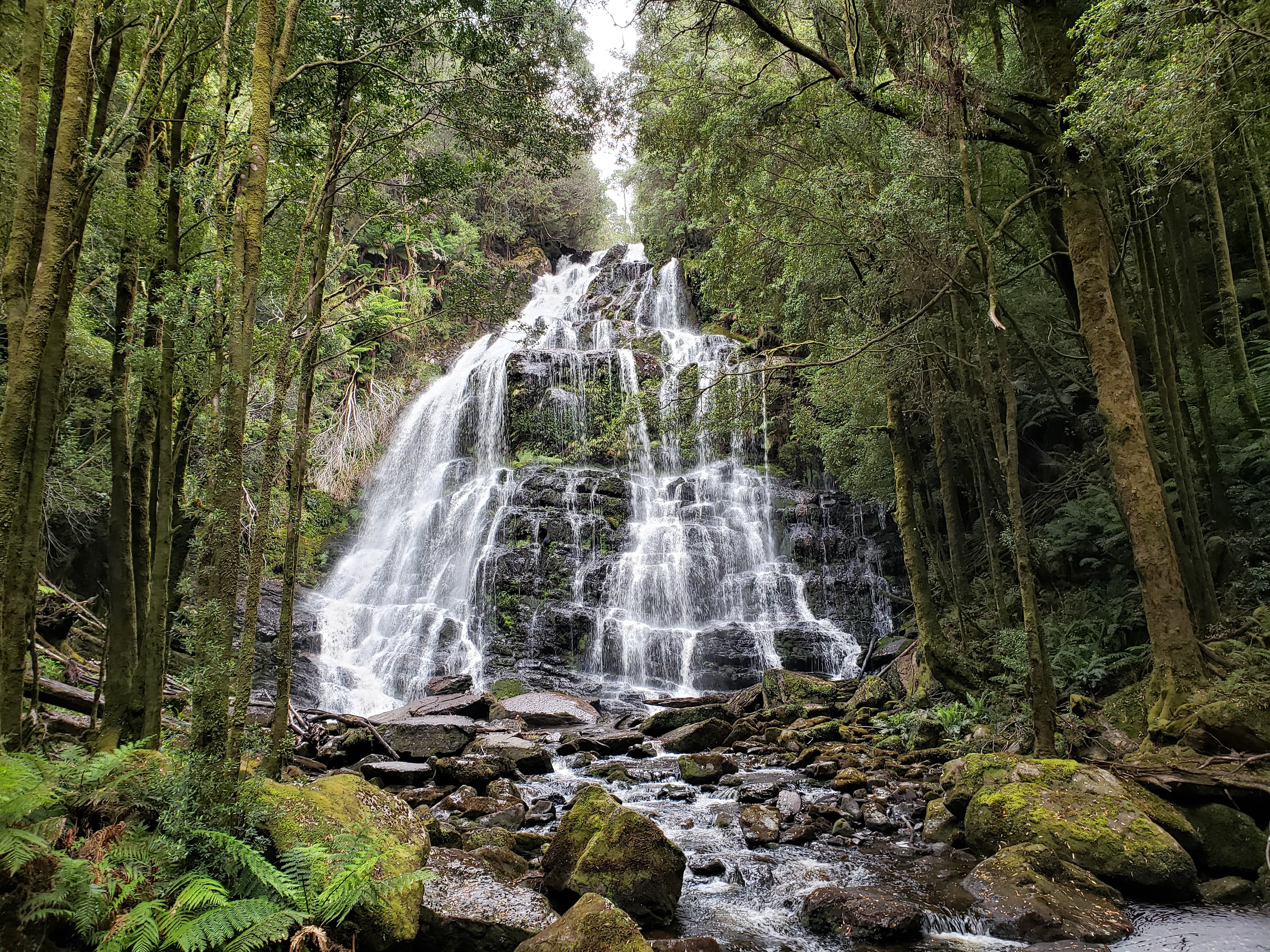
Driving on winding roads through open fields, passing the occasional men and women on horseback, then coming into Queenstown with its 19th c wooden buildings felt like a trip back to America’s wild west.
I’d spoken to Ralph the day before when seeking accommodations and met him, and Max, at the door of the Central Hotel Zeehan. As Ralph welcomed me in Max demanded my attention. It’s difficult to ignore a slobbering 130lb Rottweiler nuzzling you. Max was all love and no bite, but I was glad to have some tissues on hand.
Ralph and his wife were settling into retirement when on a whim they decided to buy the hotel. It was quite a project for a couple with physical ailments and a limited budget, but while Ralph gave me a tour of the rambling building, it seemed he’d found his fountain of youth.
They’d only managed to restore a few rooms thus far and I slept in one of them. The wallpaper, lamps, and bed frame suited the old building. I was honored to be their first paying guest.
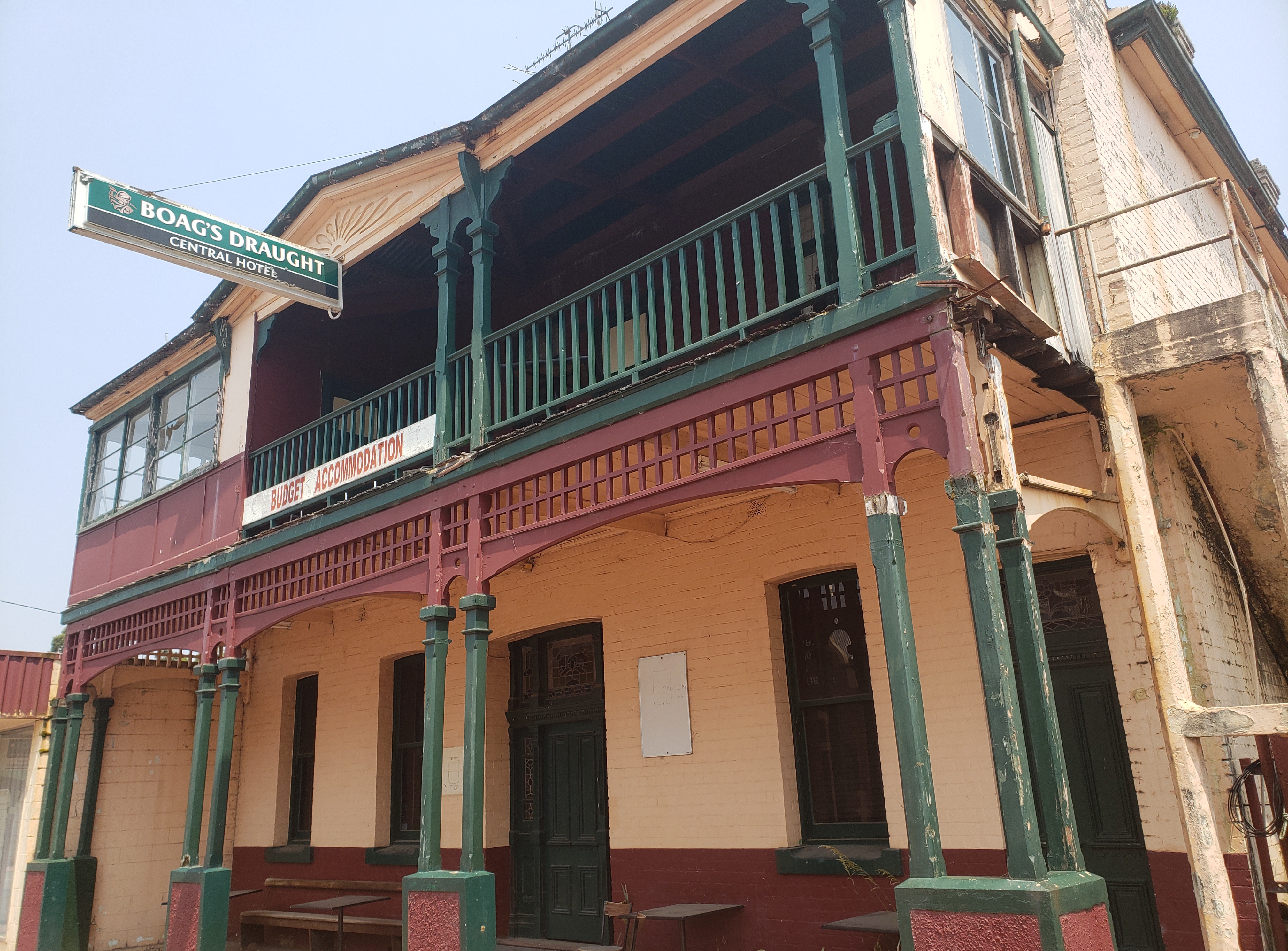
Generally I seek local color and the wonder in the commonplace, but that’s not to say I steer clear of tourist attractions. I wasn’t going to miss a steam train trip . My fellow passengers and I left Queenstown in the morning after finding our places in the recreated Victorian Era carriages. We spent the next four hours chugging toward Strahan and back, listening to our enthusiastic young guide/conductor wearing an appropriate costume, and learning about the invention of the Abt rack and pinion system. We had this engineering marvel to thank for getting the train, and us, up the steep terrain. We had a try at panning for gold where one of us was destined to find a previously planted nugget. (A young boy gave a joyous whoop when he found it).
We also learned about the region’s history.
Tales included that of a family starting a dairy farm in a rainforest, and those seeking gold despite extreme conditions. Passing through the dense rainforest Werner Herzog’s film Fitzcarraldo came to mind. The tour aptly showcased the indomitable human spirit.
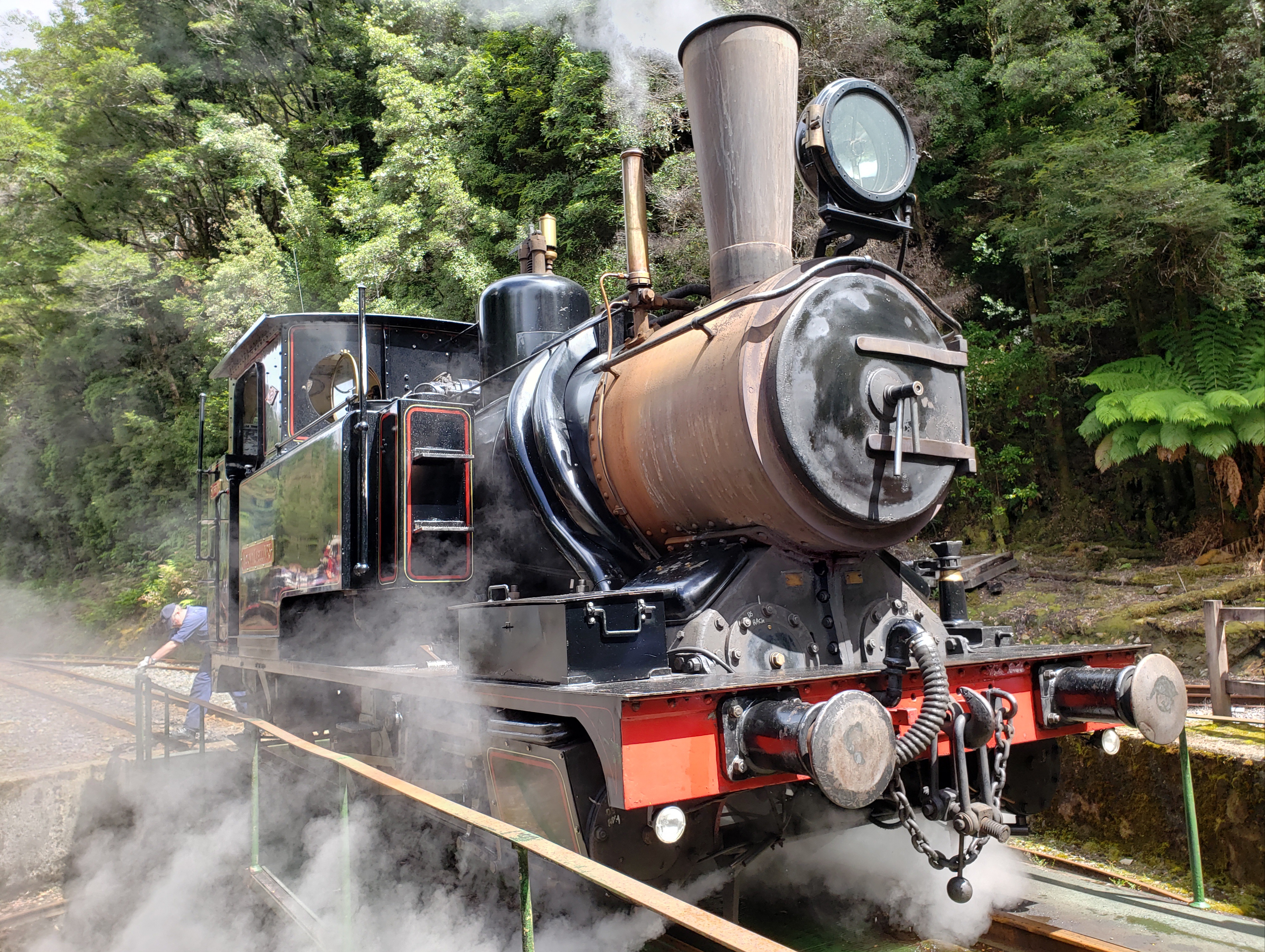
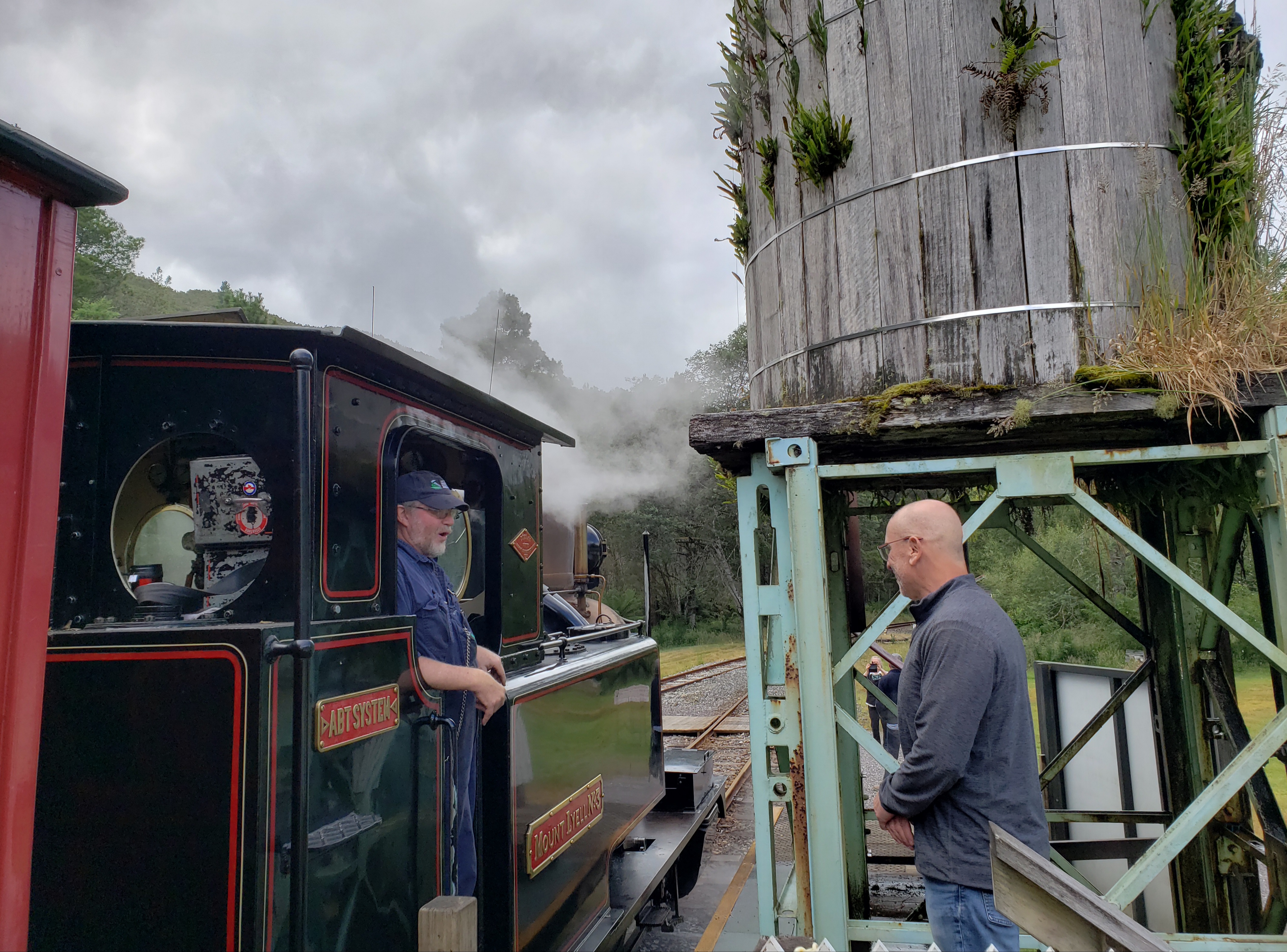
The next day I headed to Strahan, this time by car. The route was short-in-distance, but long-in-time. The train I’d taken had been the only connection between Queenstown and Strahan for years, and remained the main means of transport through the 1960’s. The steep terrain and forty-two bridges needed for the railway had discouraged the construction of any roads. However, the road used today managed to be built without a single bridge–avoiding all the rivers and hills. It’s been described as “a snake on steroids.”
Bumpy, the owner of the Strahan Backpacker Hostel, upon arrival welcomed me home, and despite introducing myself, he called me Miss New York. I called him Sir. It ruffled his feathers. I hadn’t meant to. He’d grown up in Strahan and had, decades before, been a professional athlete. His weathered face suggested some hard living, a life outdoors, or both. He’d traveled the world and returned home not long ago. He didn’t say what he’d been doing those years, nor how he’d acquired his nickname. I gathered quickly, despite his gift for gab, personal details were personal.
Bumpy liked to joke, but when he got serious he revealed a rough edge. Apparently it wasn’t too rough. Profuse thank you’s for his kindness and guidance from travelers were penned, painted, and penciled all over the expansive kitchen and dining room walls.
He booked for me, with a discount, the “must do” river cruise the next day. I showed up for the tour, but my reservation couldn’t be found–until I thought of asking for it under the name “Miss New York.”
Similar to the train trip the cruise was packed with festive tourists, lots of historical information, and beautiful scenery.
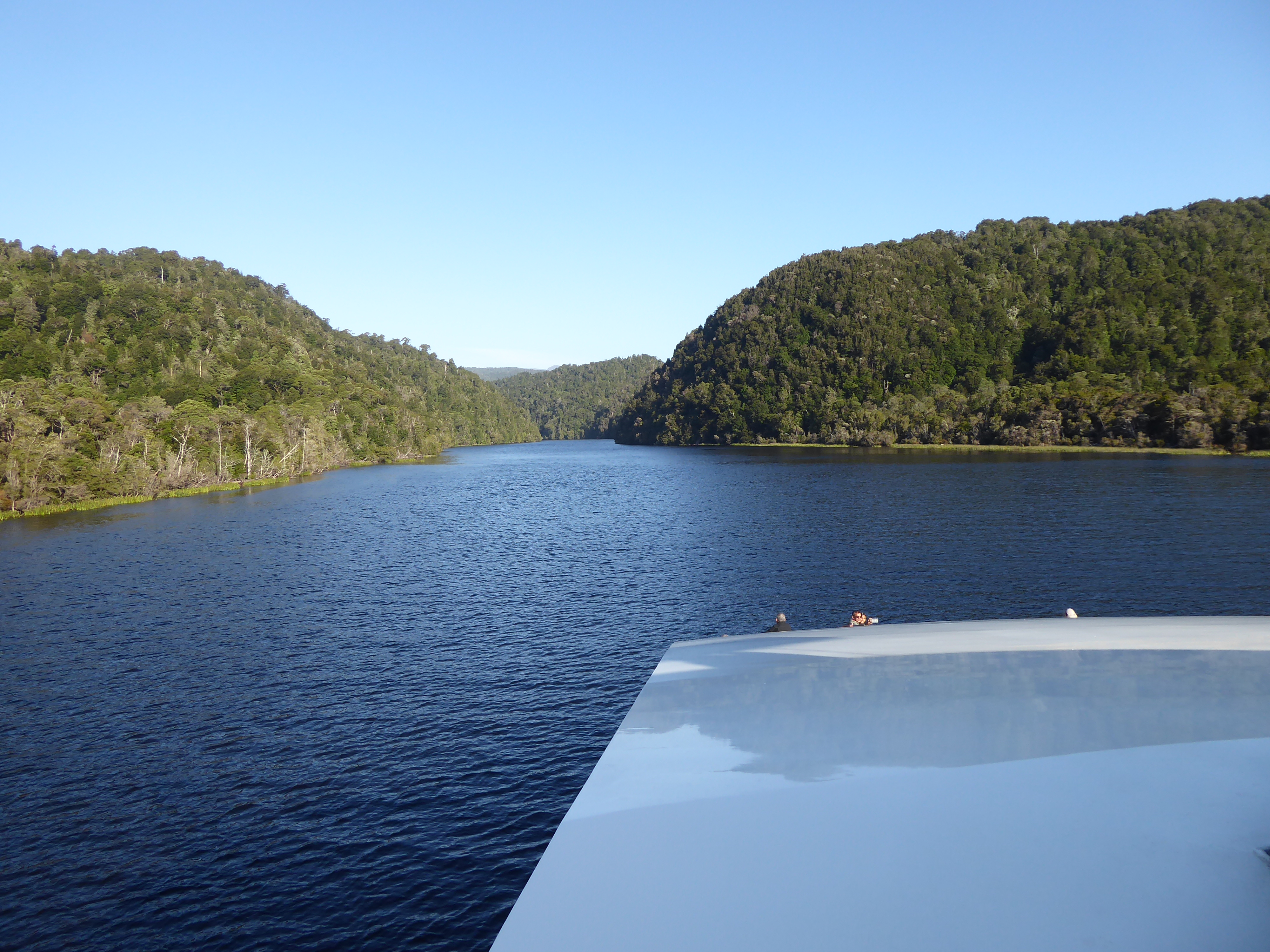
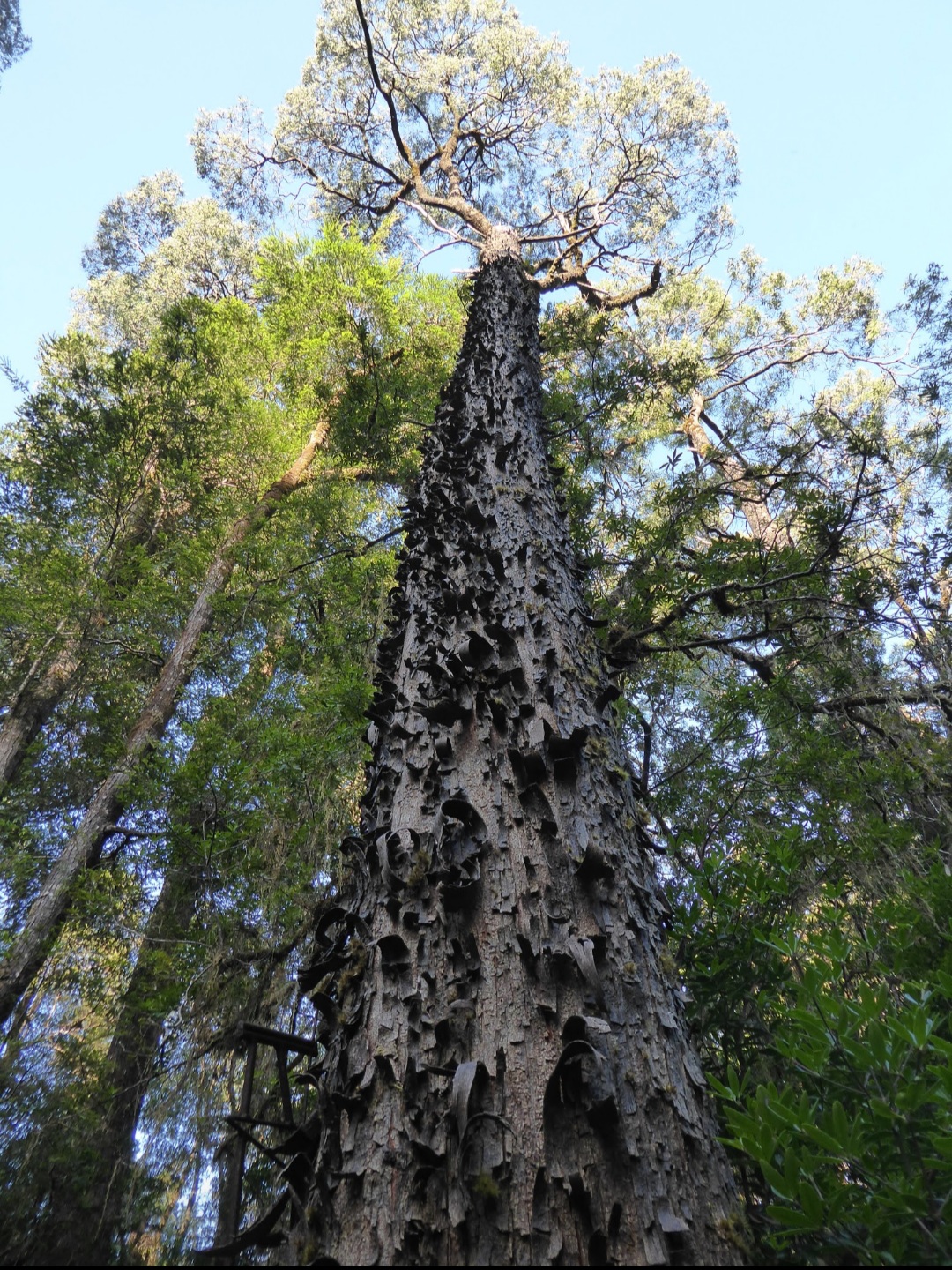
It was a very pleasant day, but I was ready to head back to the roads less-traveled. I drove on to Corinna.
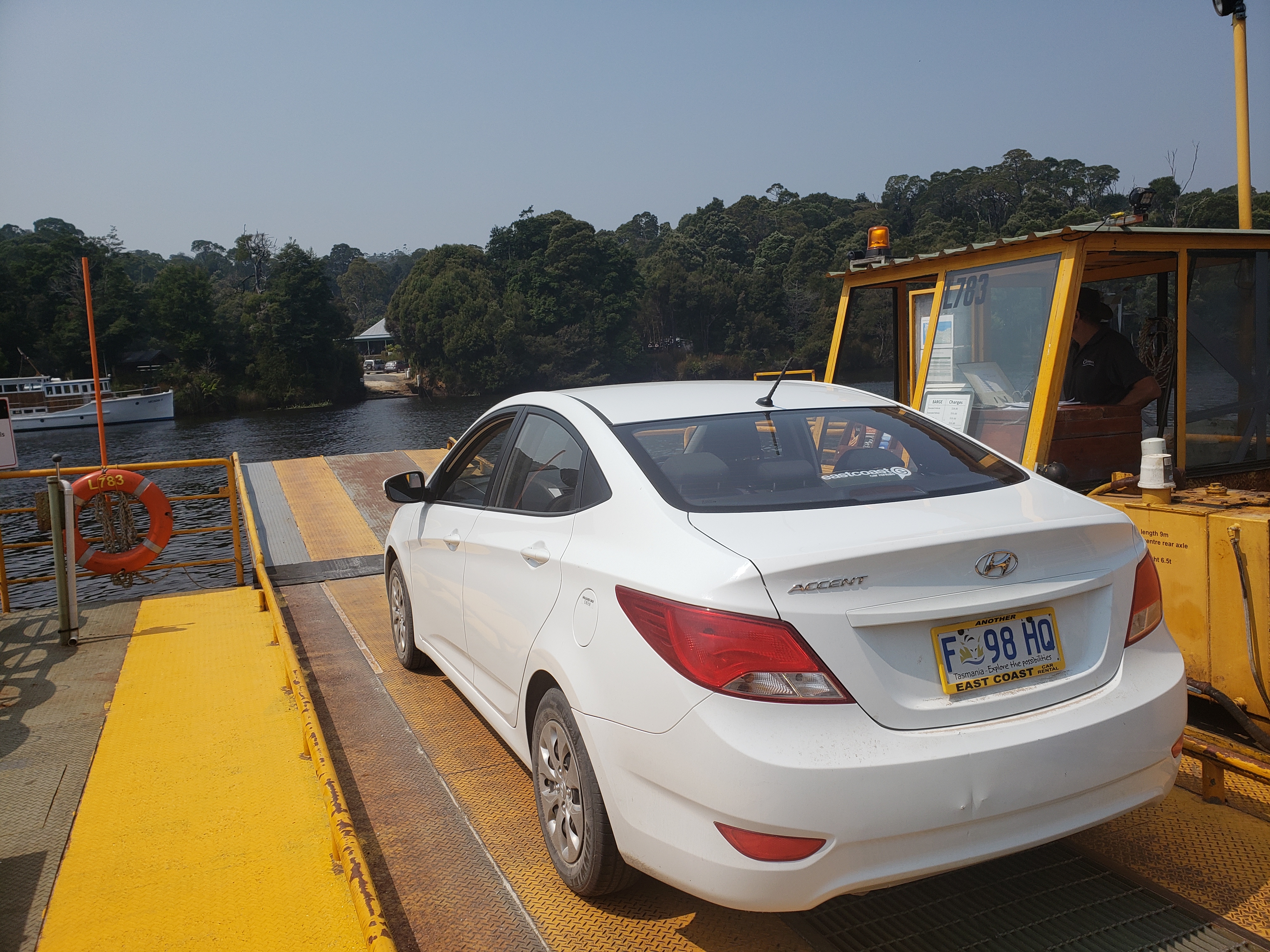
Corinna, once a thriving gold mining town, is now a remote destination surrounded by rainforest. Sitting on the porch of the Tarkine Hotel with a cold drink is prime entertainment. And if you are lucky you might spot a shy and elusive platypus while hiking or kayaking. I’m pretty sure I saw one swimming in the river–at least I’d like to think so.
It’s the kind of place people go for solitude, nature, and silence. But Patrick, a shy and gentle soul, living and working there the past 18 months takes solo bushwalks as often as possible to “get away from all the people, traffic, and noise.”
I asked Patrick for hiking suggestions and he kindly obliged. On the second day he thought to add a gentle warning about the poisonous snakes in the area. It was mating season and the snakes could be aggressive. It was best to walk with a stick and make noise so as not to startle them. I heeded his advise and went on my hikes fairly confidently. Besides, I was never venturing that far, and at worst assumed the hotel kept an ample supply of snake bite antidote on hand. Out of curiosity I inquired later–they don’t.
I hadn’t been following the news much, but seeing a grey and hazy sky on my way from Strahan to Corinna reminded me of the dire events elsewhere. Tasmania had mostly been spared from the forest fires, but the smoke was blowing in from the mainland.
Leaving Corinna, I took the gravel road further west. It was rough in a few places, but nothing too bad and I didn’t get any flat tires. With little traffic I could take my time and enjoy the view.
I classified the drivers I saw into two groups: the “holiday-makers” and the “cowboys”. The holiday-makers drove in RVs or cars packed with families and pets. They generally adhered to the rules of the road. The cowboys, often in pick-up trucks, drove with disconcerting abandon. (Sadly, despite the signs reminding drivers to use caution, particularly at dusk and in the evenings, I’d never seen so many roadkills.)
I’d thought of staying in Arthur River, a few hours away, but when I got there the small tourist town looked rather sad and forlorn–the way tourist towns off-season often do.
The next town wasn’t far, and getting hungry, I pulled into the Marrawah Tavern for something to eat. Besides a grocery store/gas station, it was the only place within miles amidst acres of farm land and a few homes. The tavern seemed large enough to hold the entire town’s population, and then some. It was empty except for a family and lone employee.
After digging into a hearty platter of fish and chips, I asked the employee if he knew where I might stay the night. One phone call led to another and soon I was driving up to a lovely lone cottage with a stunning view and short walk to the sea. It was only available that one night, but I enjoyed a walk along the wide beach and watching a trio of wind-surfers defying gravity in the powerful winds. That evening, I watched a DVD of Hitchcock’s “The Trouble with Harry” and Shirley MacLaine’s star-making film debut.
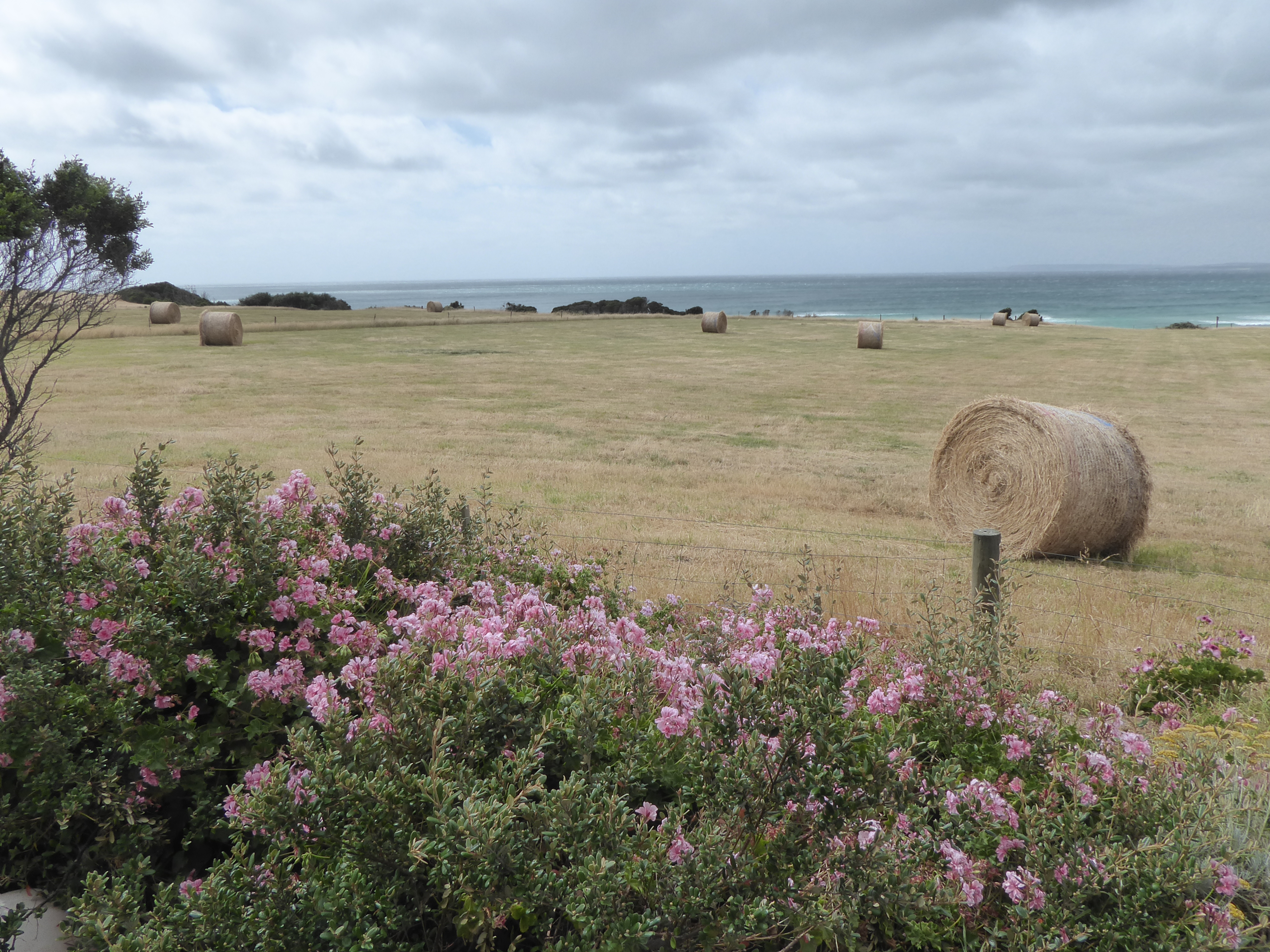
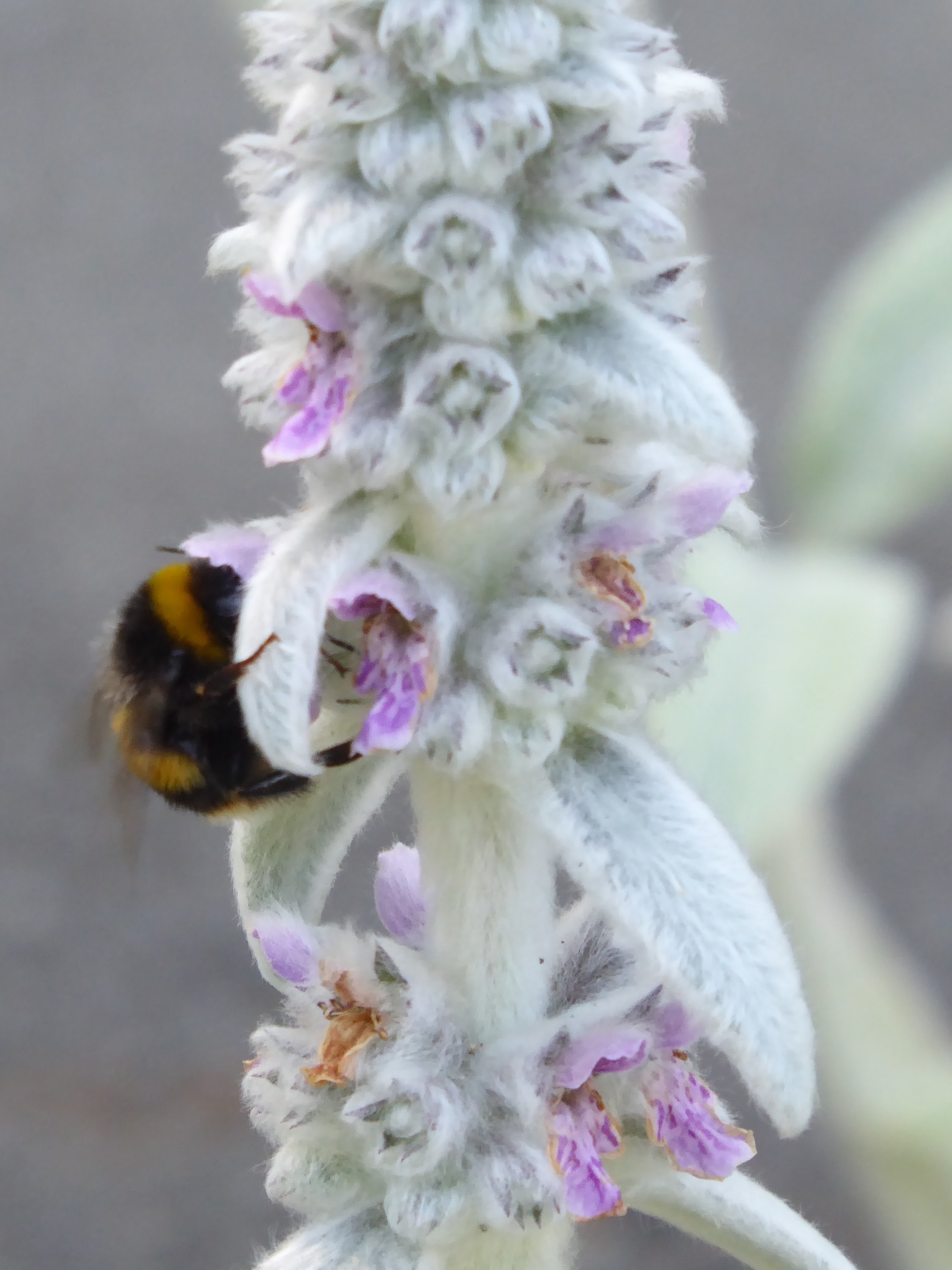
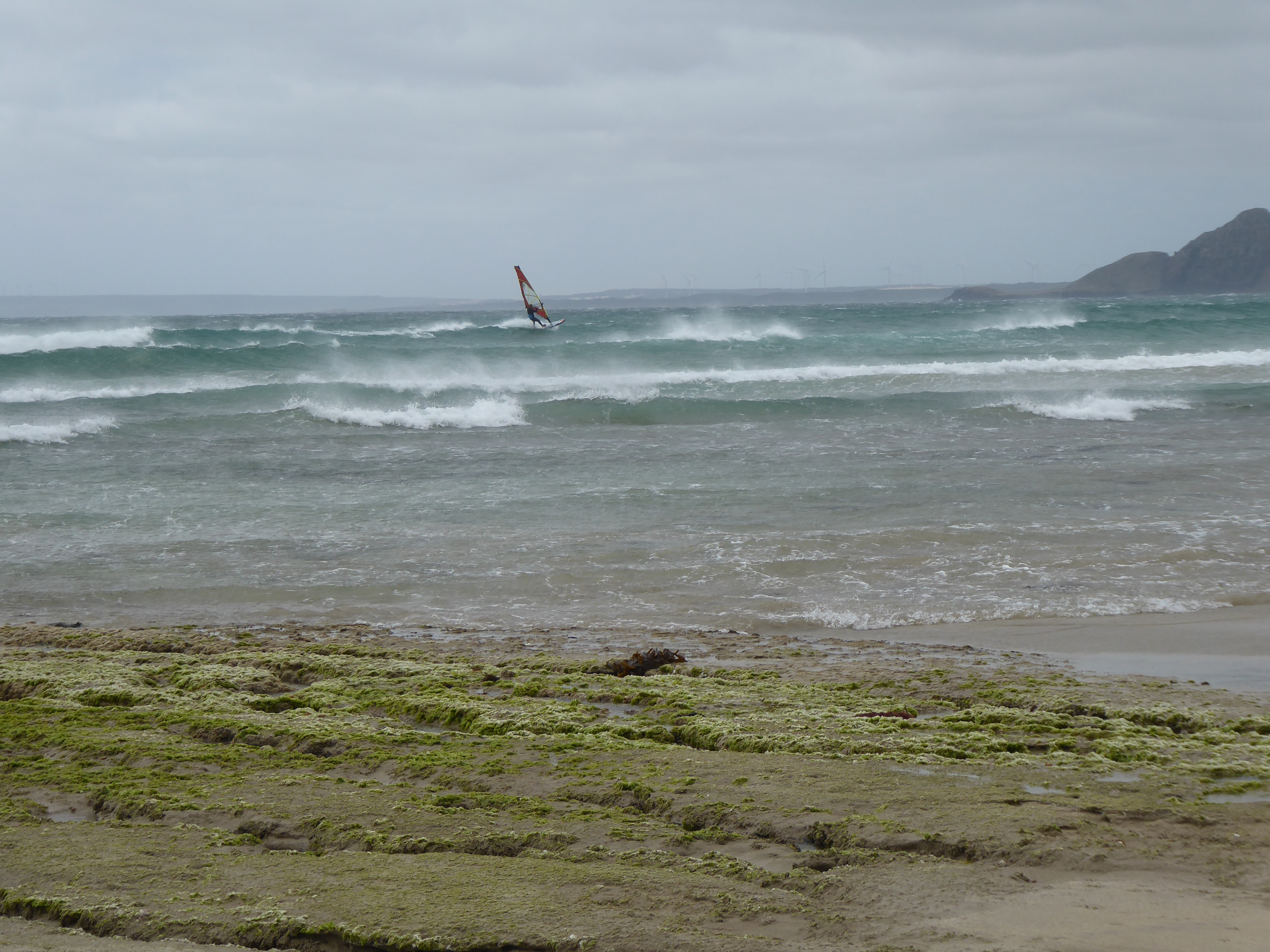
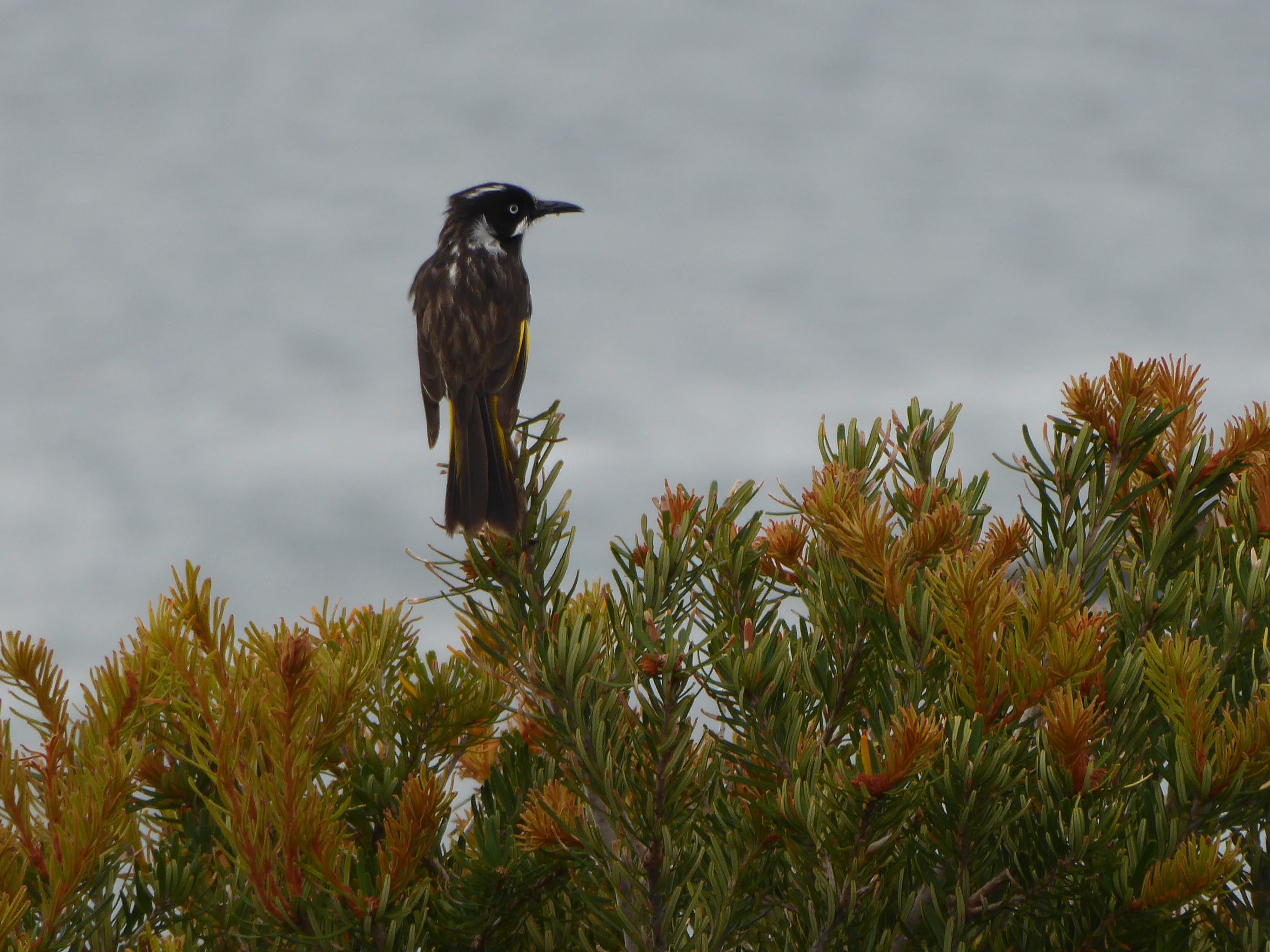
The town of Stanley, with its charming colonial buildings, and a colony of penguins (which I failed to see) was my next stop. I stayed a few days exploring the area and tackling “The Nut.”
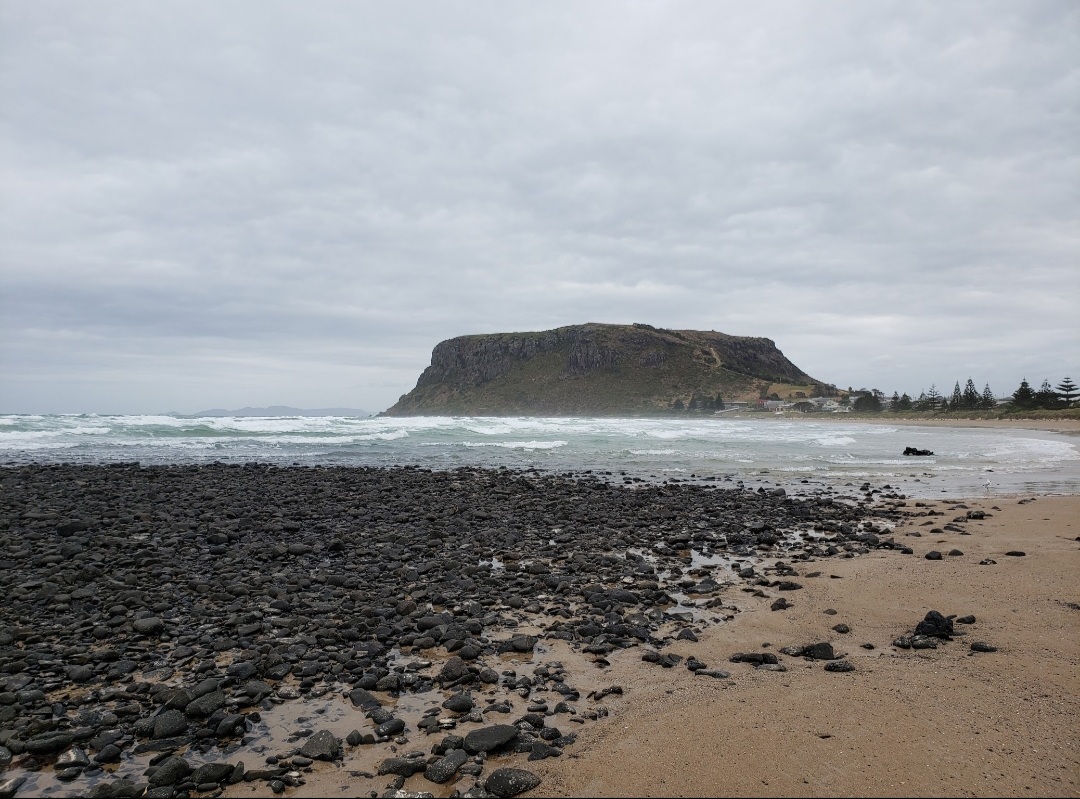
A visit to the nearby Highland Historic Site was another lesson in the 1800’s fledging region’s economy based on wool and lumber, and the dependency on convicts’ labor.
Next destination: Cradle Mountain. Getting there I got lost on a winding road in the rain and happened upon the Wilmot Historic Museum. I couldn’t resist a visit.
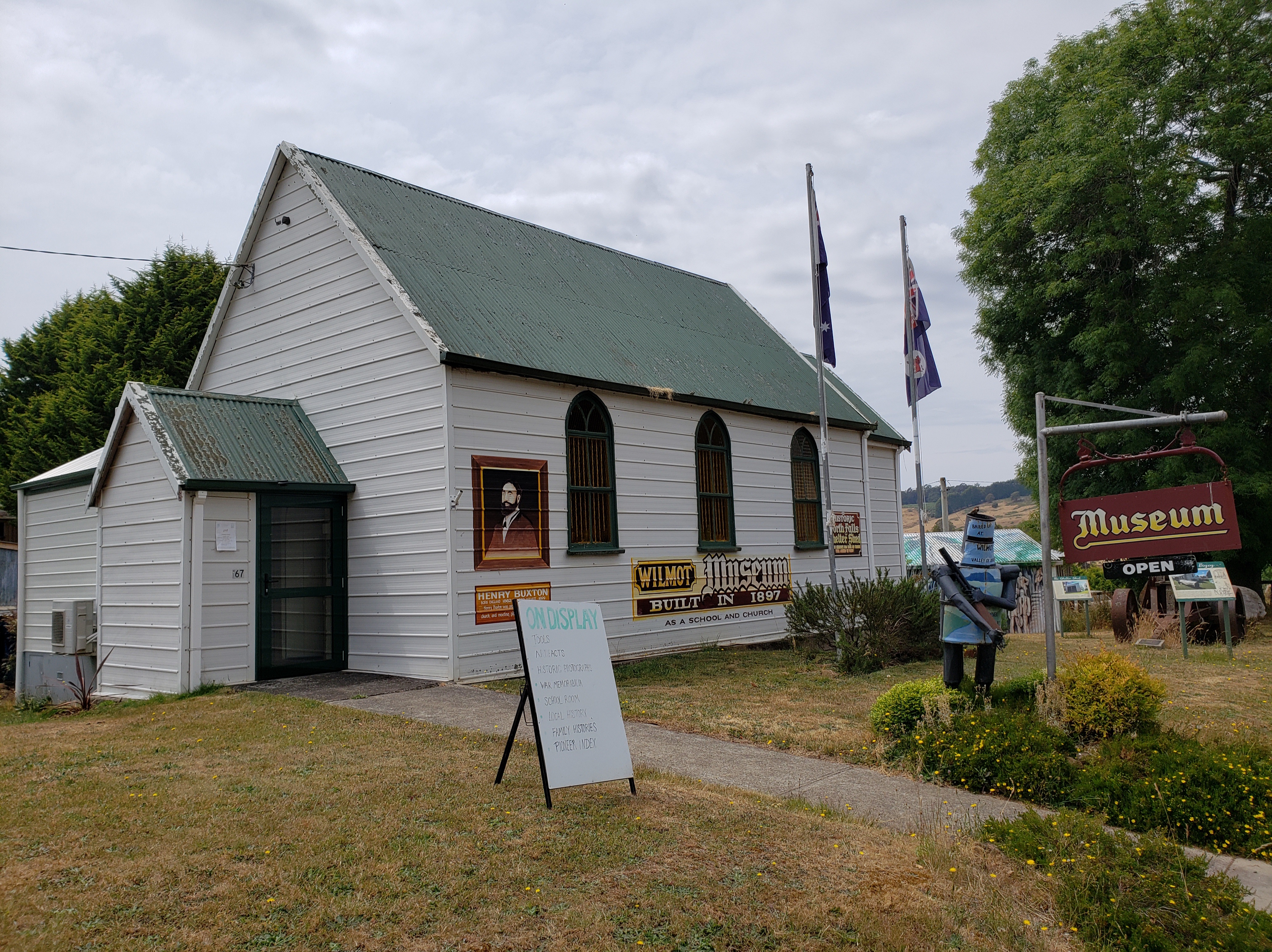
While admiring the collection of household goods, photos, clothing, tools, and what-nots of the past, the curator/town resident shared tales of her family. They’d come as prisoners from Ireland convicted of petty crimes. According to family legend, one relative was so desperate during the Potato Famine, she’d stolen a loaf of bread just to get away.
By the time I got back to my car the sky had cleared. I was soon on the correct route.
The expansive Cradle Mountain–Lake St. Clair National Park is a gem. It offers excellent hiking trails that can be completed in minutes or days, all with stunning views. Despite unfavorable forecasts, I managed to take some wonderful walks–often with no one in sight.
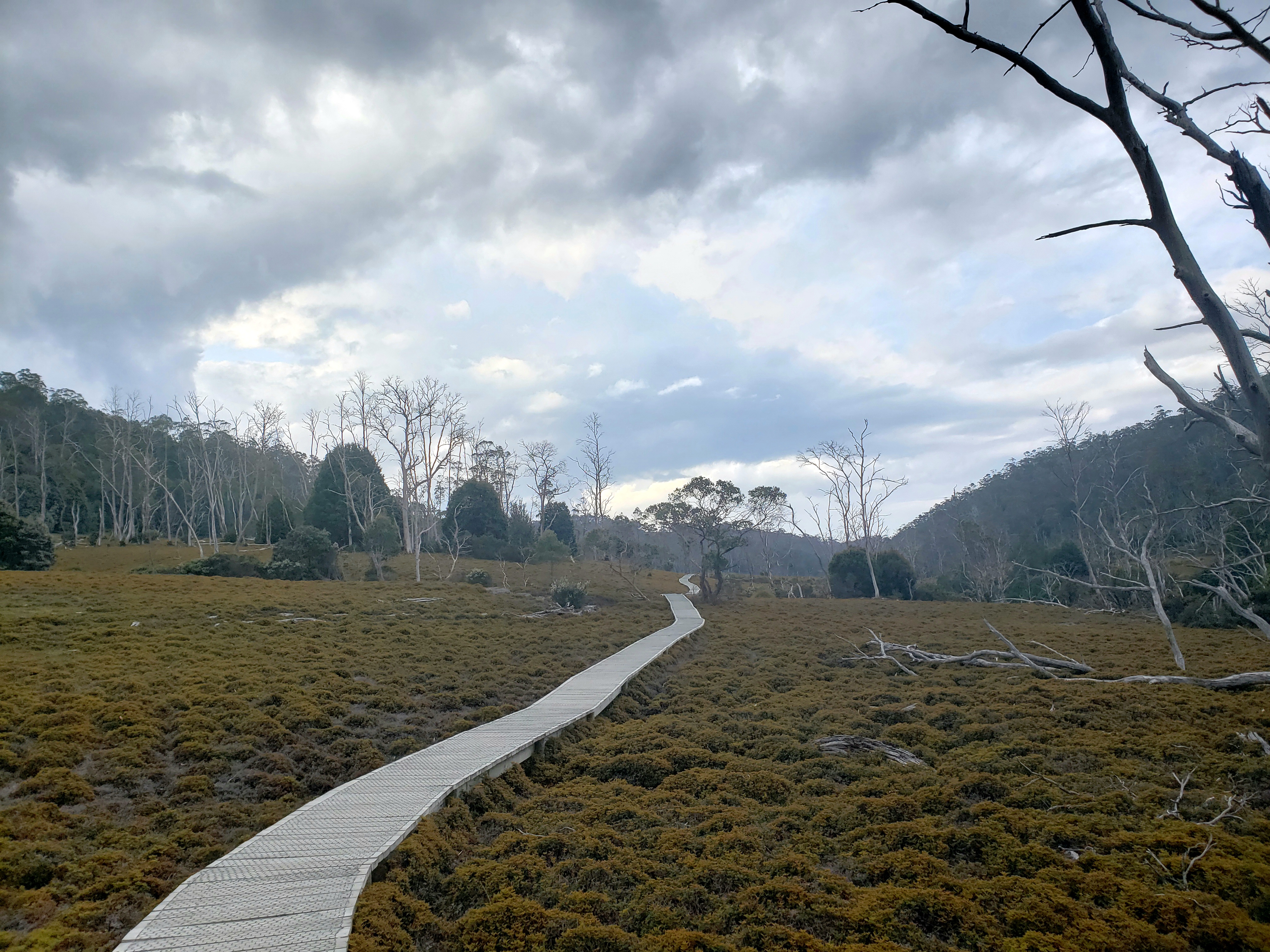
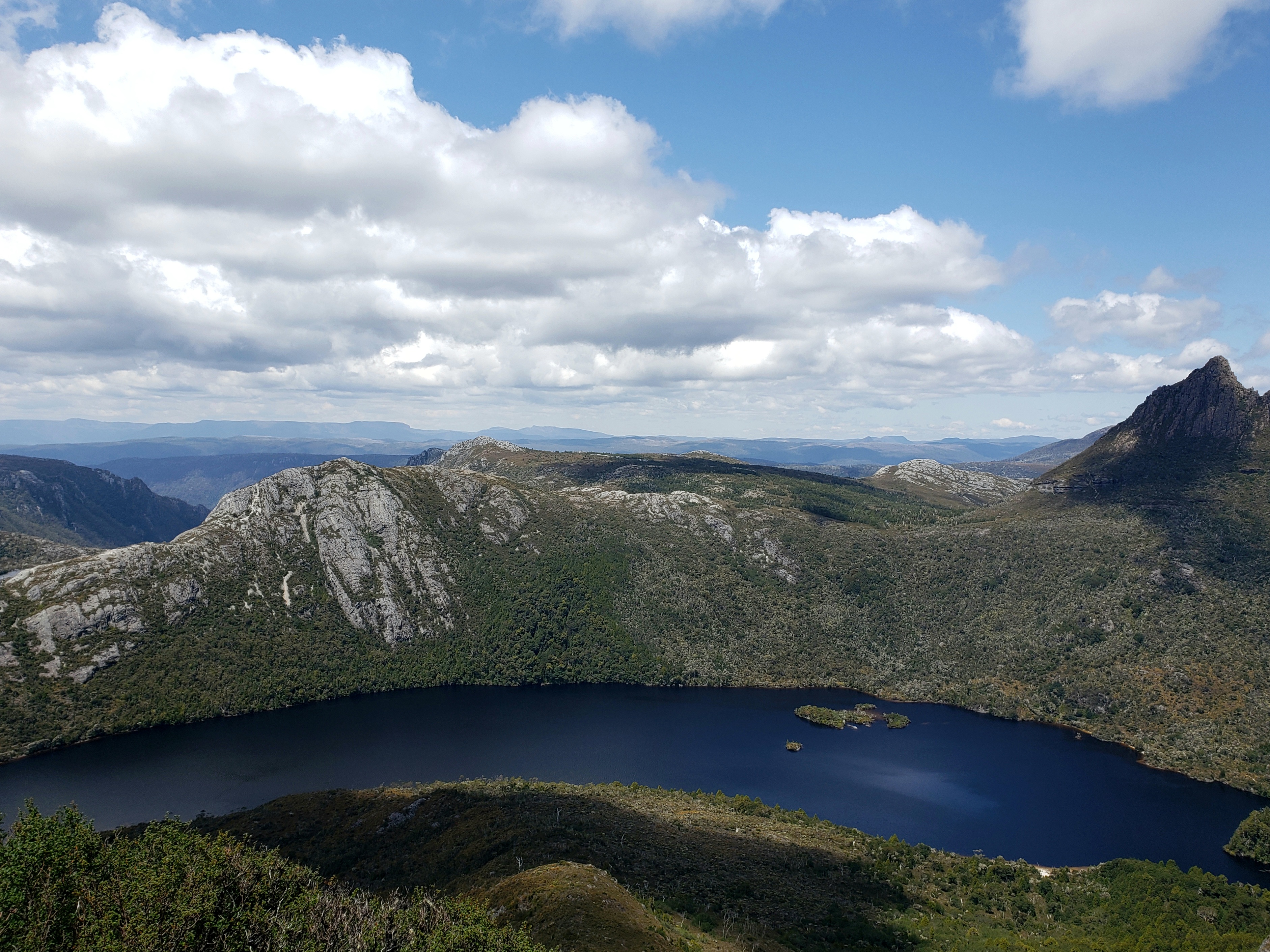
My three nights in a cozy cabin, warmed with a wood burning stove, within walking distance of the park, was one of my trip’s many highlights
It was time to head back to the coast, this time in the east, and toward the famed Bay of Fires. It’s known for its white sand beaches, crystal clear waters, and striking orange lichen-covered granite boulders. The boulders were not, as I’d thought an inspiration for its name. Apparently that came from a British explorer in 1773 who’d seen fires on the beaches lit by the island’s first residents who called it Larapuna.
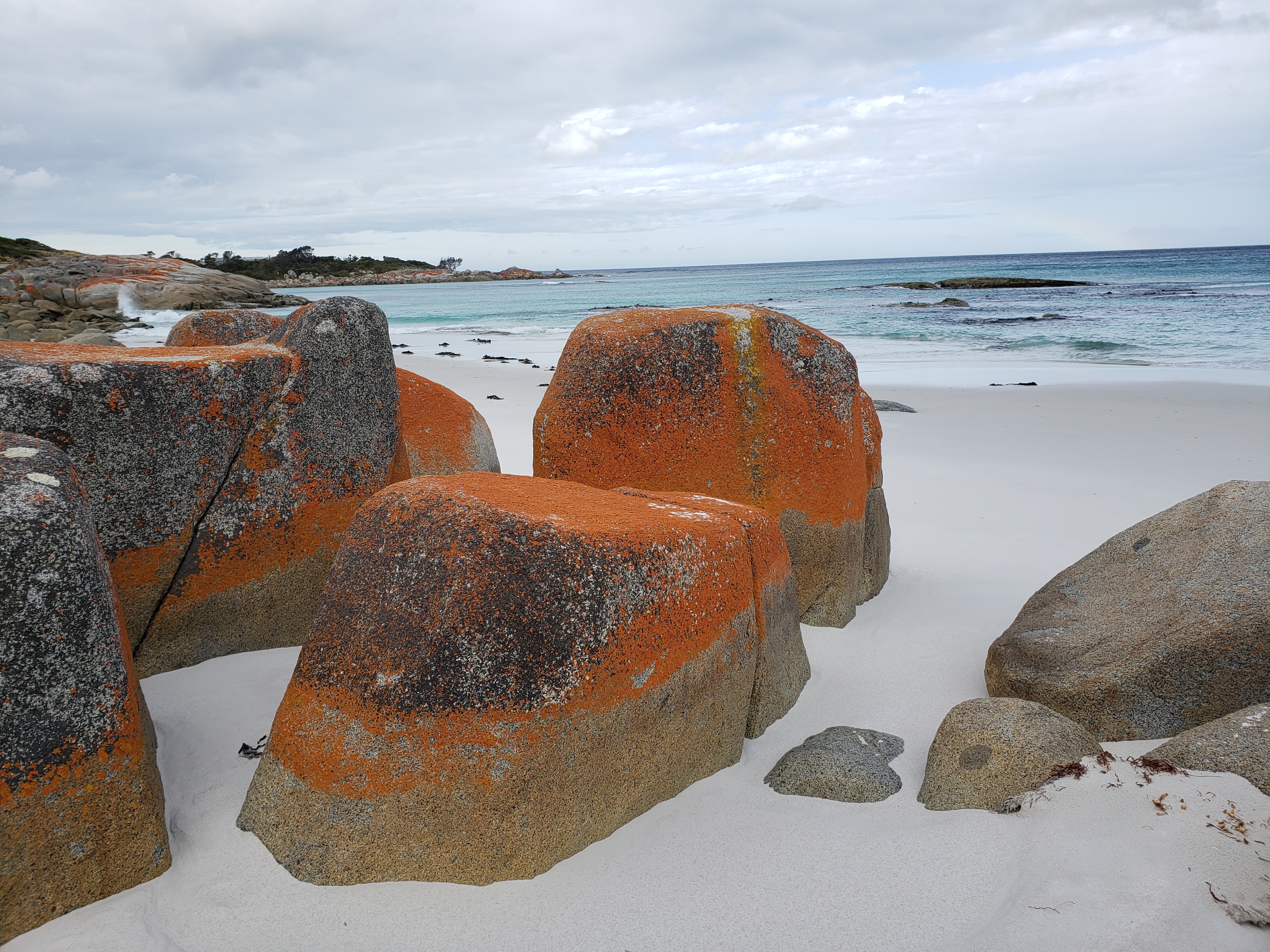
There are very few homes built on the Bay of Fires. Fortunately, I was able to book one of them for two nights. Unfortunately, upon arrival, a bee, clearly distressed to find itself inside my shirt, and lacking the wherewithal to exit the way it came in, showed its displeasure by stinging me not once, but thrice. My reaction, besides the expected vocal one, was not serious, but it was painful. In any case, recuperating from the discomfort was a perfect excuse to laze about, take walks along the shore, and gaze at the sea during my brief, but luscious stay.
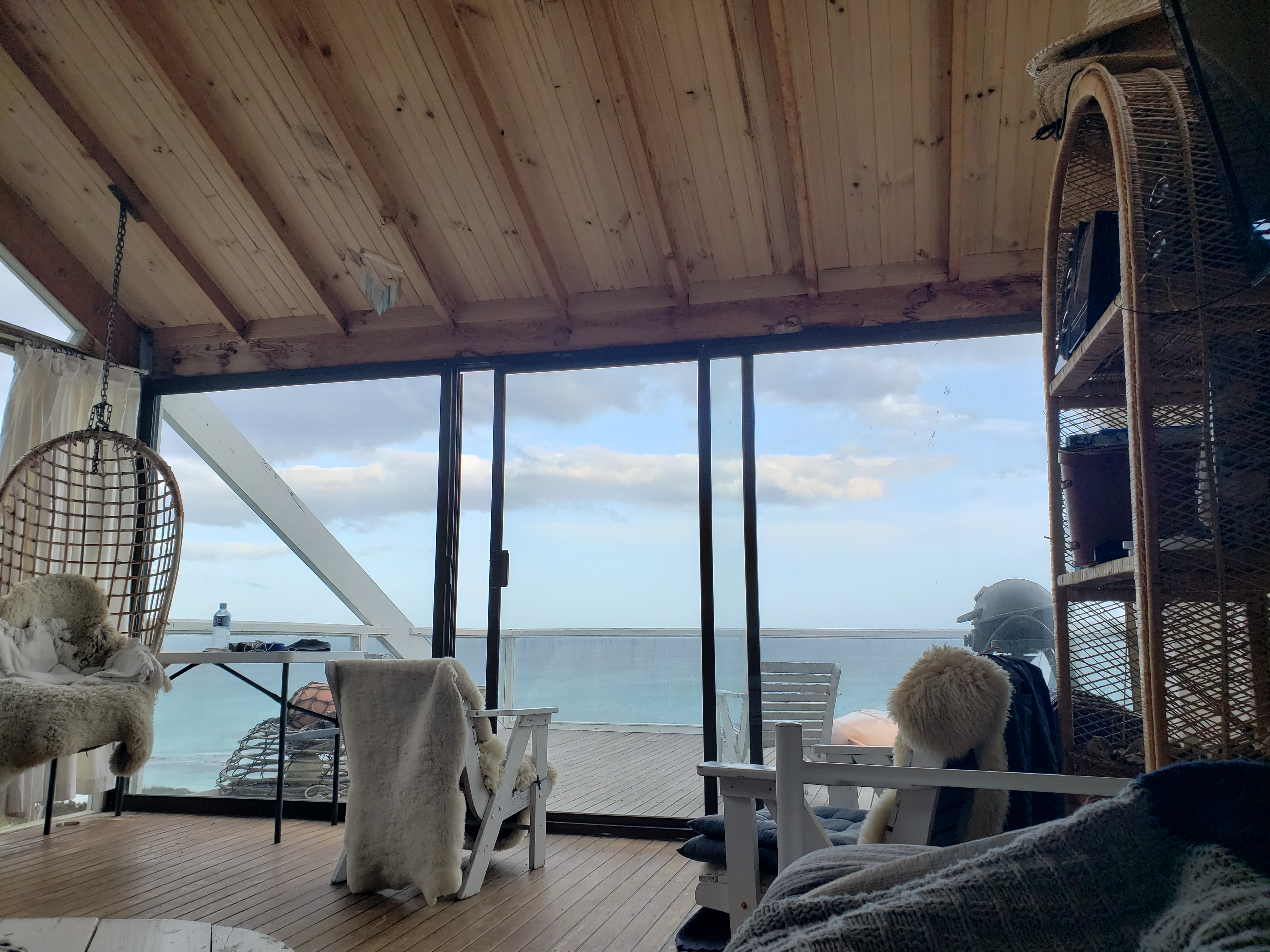
Fully rested and restored, I followed the coast south to the Chain of Lagoons noted for its beauty and proximity to the Freycinet National Park.
Lately when I book accommodations I choose a place of my own, but given the excellent reviews I was persuaded to rent a private room in Chris’s home, right smack in the middle of the Chain of Lagoons. It was a wise decision.
Chris lives on an extraordinary property, in a beautiful home, practically surrounded by the sea. She and I immediately fell into sharing tales of our lives, love of travel, and hiking (her solo hikes–both day and overnight(s)–were far longer and more adventurous than mine). Already in her sixties, or so, I was surprised to learn she’d only started hiking a few years ago.
Her front porch was ideal for enjoying the antics of the wallabies in semi-residence, our conversations, cups of tea, and the view . My three nights there went all too quickly.
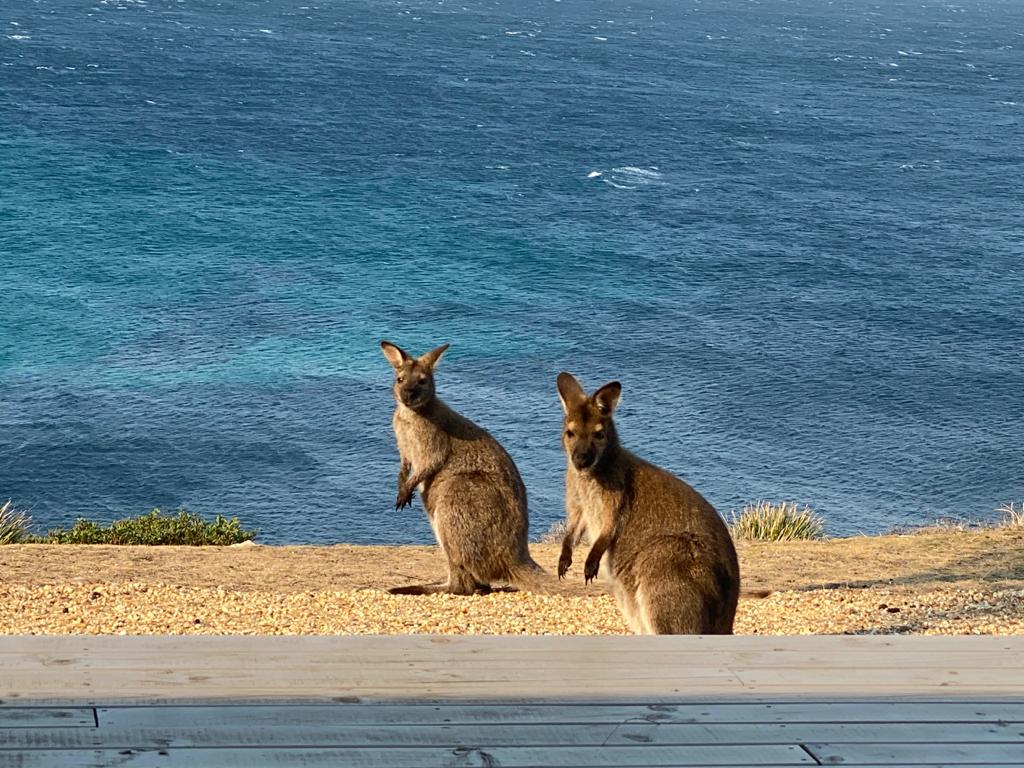
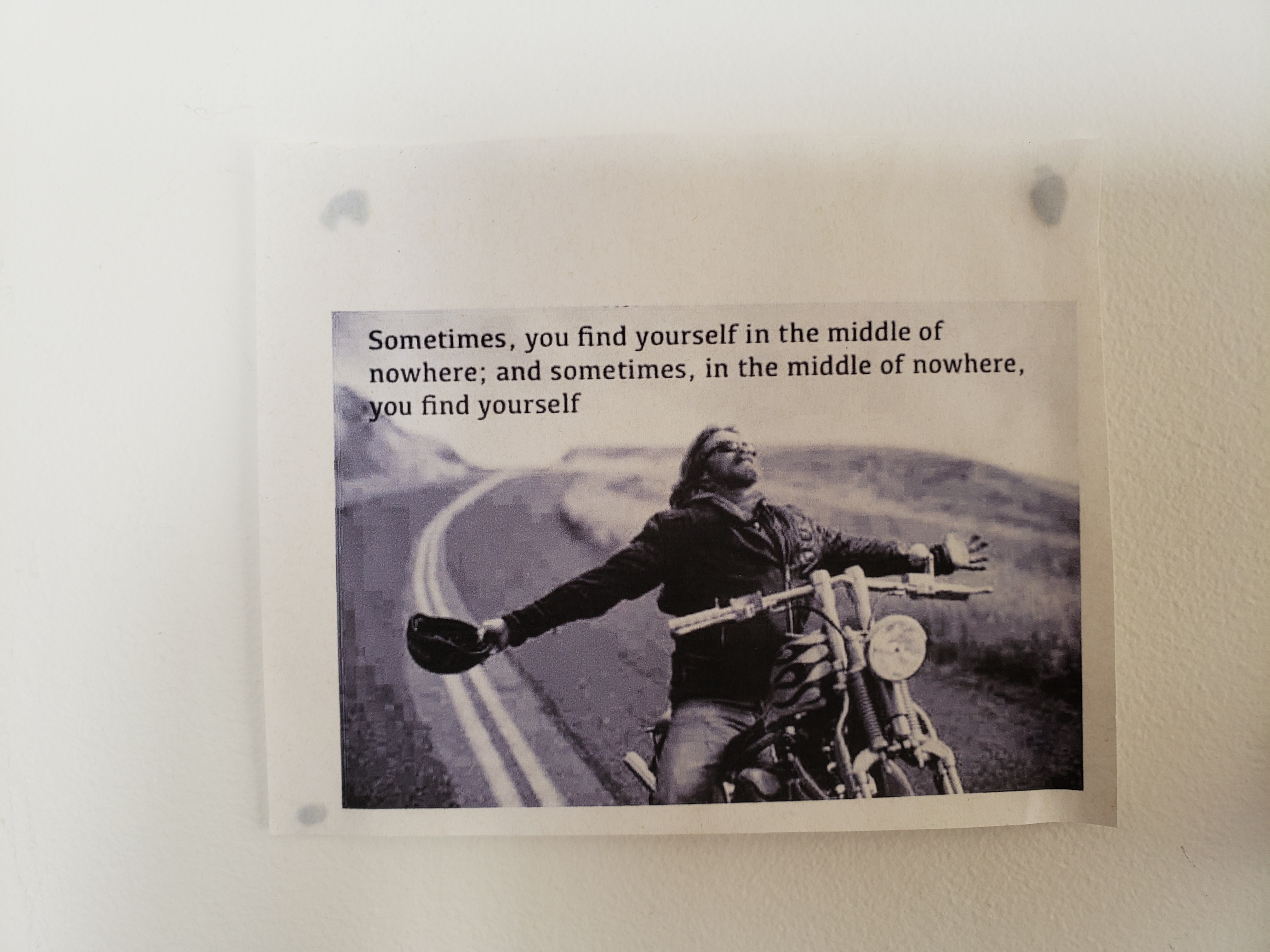
And the Freycinet National Park did not disappoint. It offers a multitude of stunning hikes through forest and along the coast. Its most popular is 11 kms long and more than 1,000 steps, all up, to the Wineglass Bay lookout.
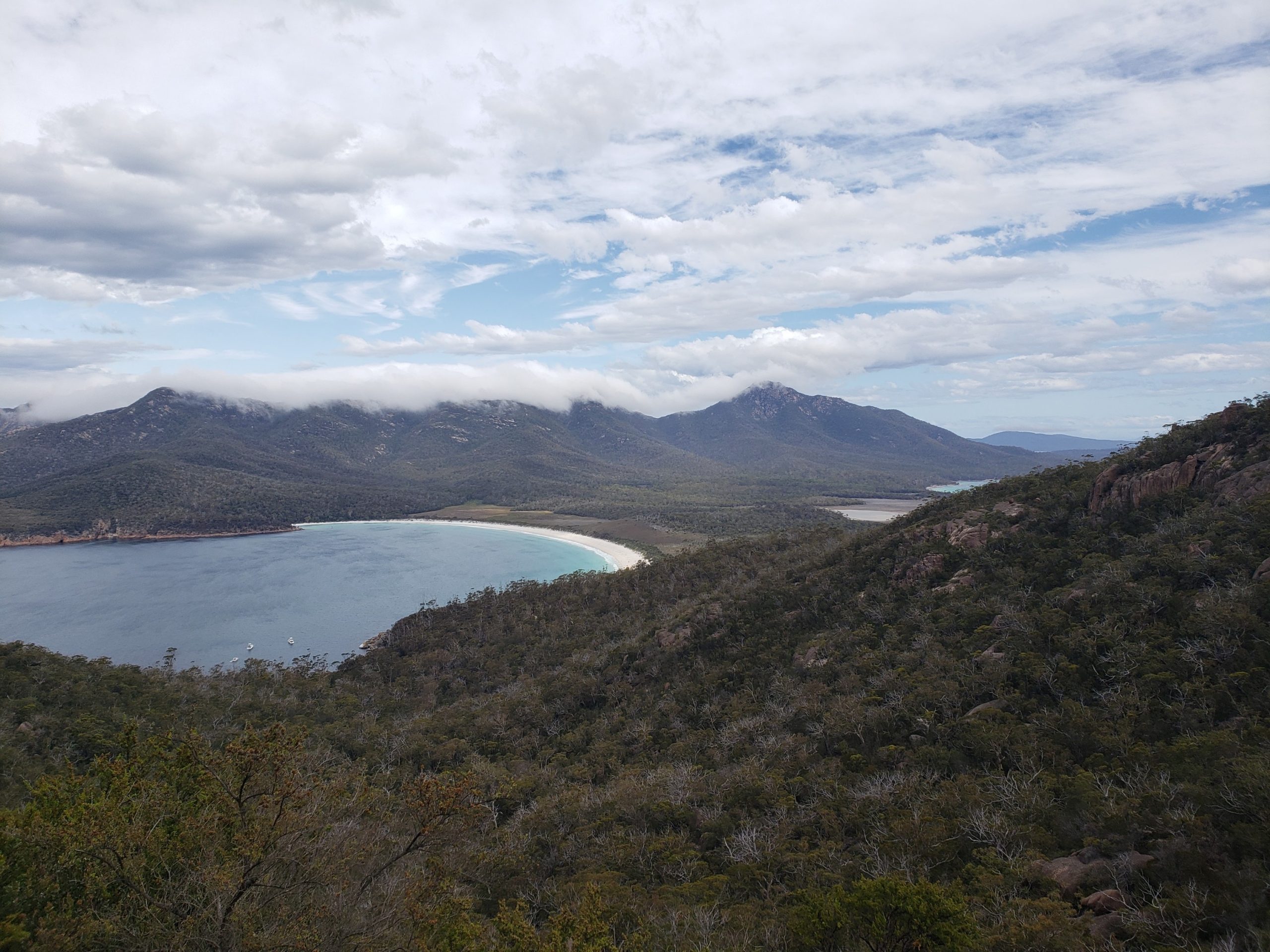
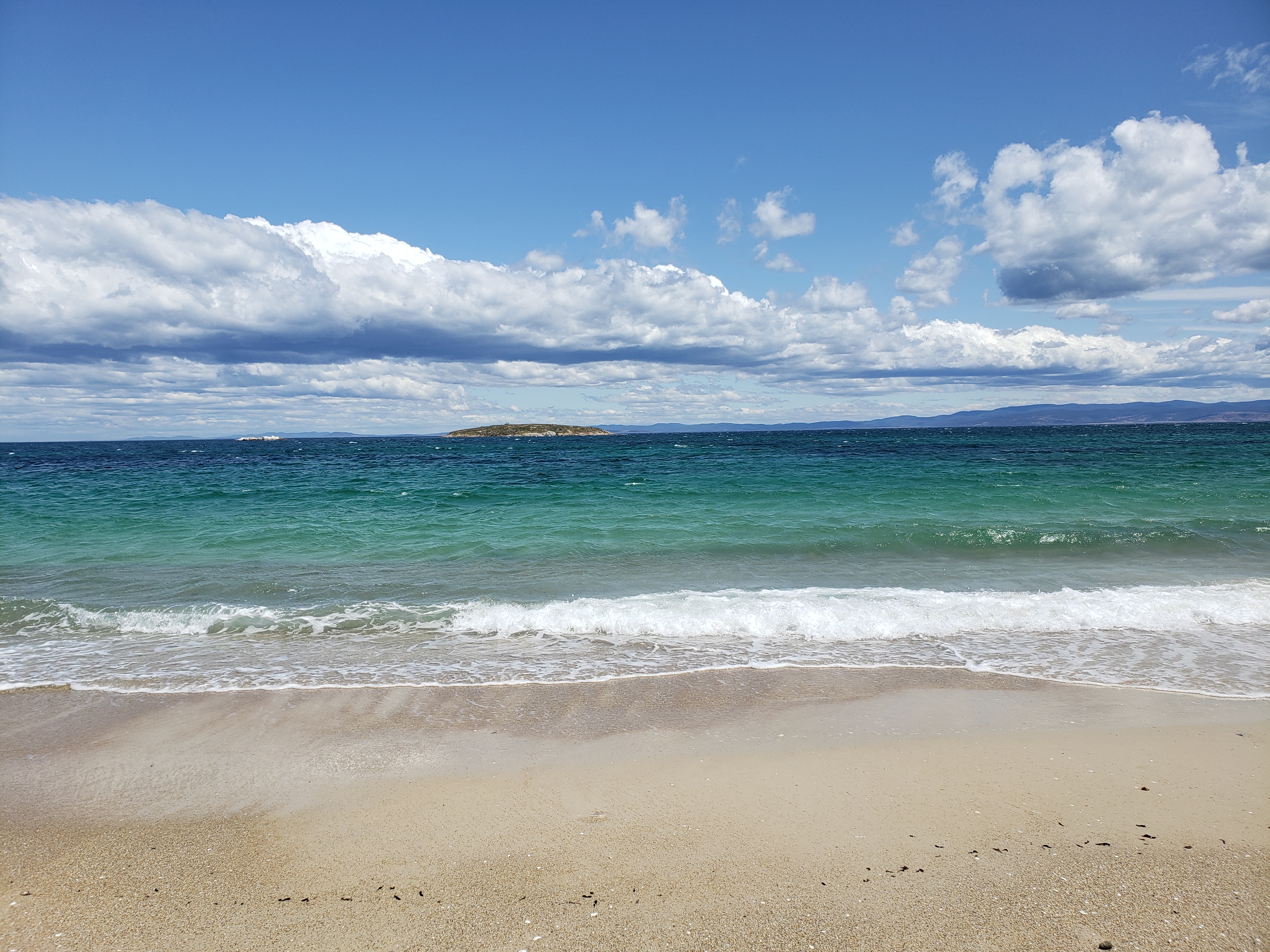
Saying goodbye to Chris felt like parting a dear friend.
I’ve spent blissful hours in major museums getting lost amid priceless art and objects. However, local museums, often just a few rooms, rarely with anything famous, are like invitations into someone’s fascinating home–no glass, ropes, nor barriers. They’ve provided me with comparable joy and awe.
And the staff (usually one person) are generally charming, entertaining, happily sharing tales, and displaying a contagious passion for their collections.
The Bicheno Motorcycle Museum was a rare exception. But the visit was nonetheless interesting. (The only conversation my visit elicited was a request from an elderly woman for the entrance fee. She appeared largely disinterested with my presence. To be fair, it was her son’s collection and he was unfortunately elsewhere.) Seeing the mechanical evolution of these machines, the aesthetics of their design, and assorted memorabilia was quite satisfying.
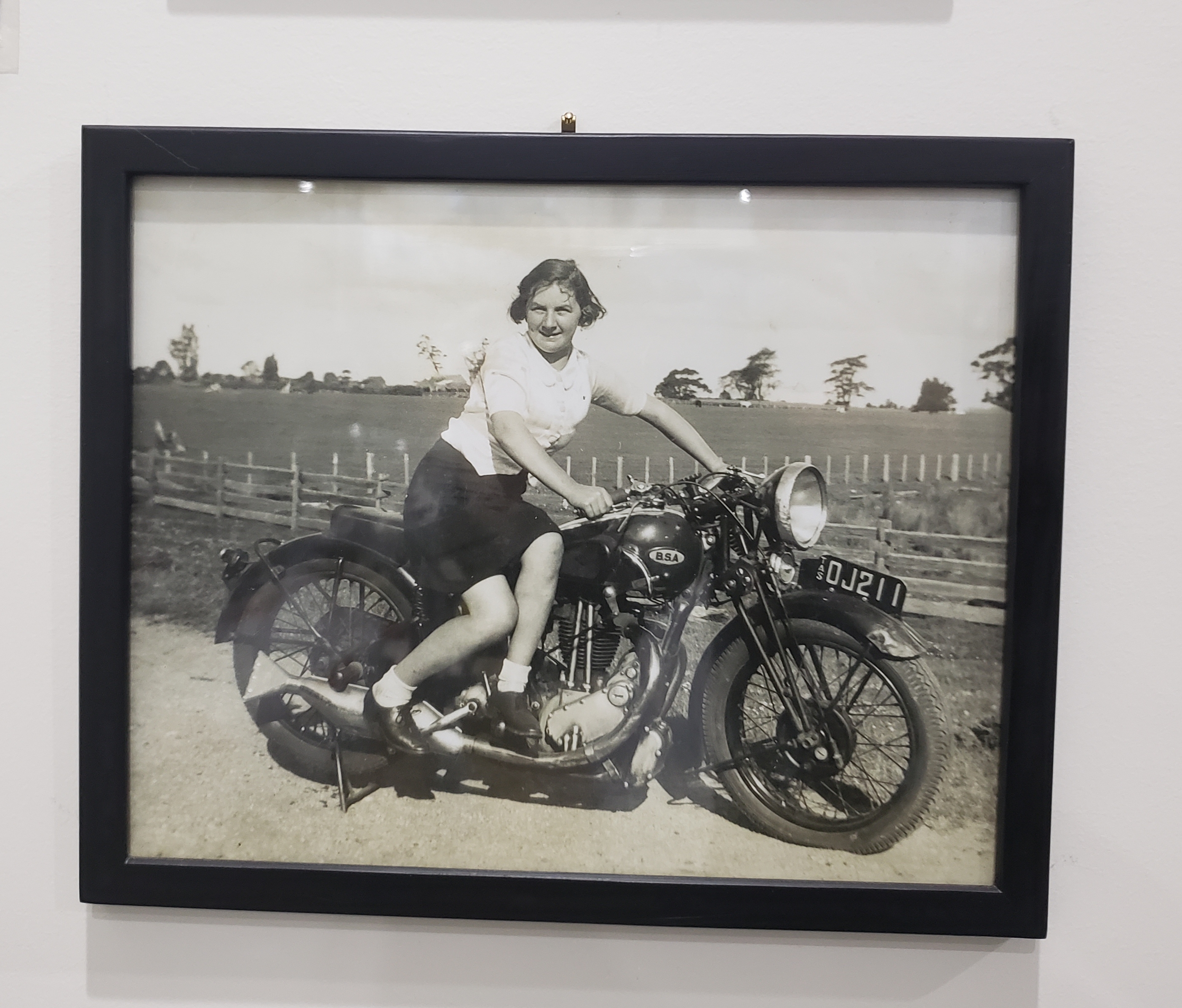
I was nearing the end of my trip in Tasmania. One of the last places I hoped to visit in Tasmania was Maria Island. I booked a home in Tribuanna, a short ferry ride away.
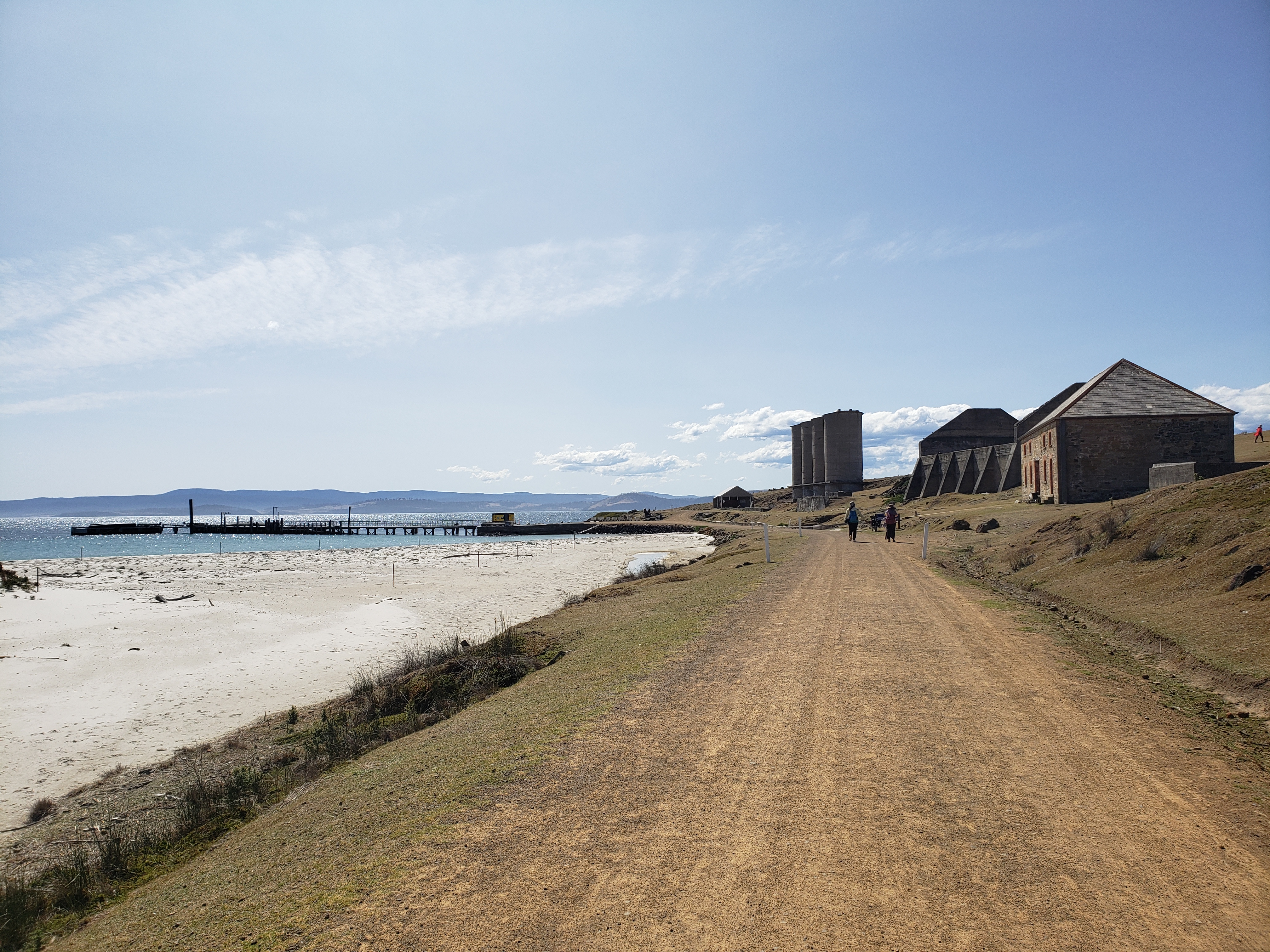
The risk of forest fires throughout Australia was still the primary concern and main news. The Parks Department was considering closing off Maria Island to the public because of the lack of rain and high temperatures. I made plans to go the very next day.
It was on the ferry to the island that I first heard of the coronavirus. It was the peak of a very lucrative season for the crew, who were also lobster(known locally as crayfish) fishermen. The crayfish are a popular delicacy for the Chinese celebrating their new year. Suddenly, China halted the trade due to this new virus and the crew were offering the crayfish to the passengers at the drastically reduced price of A$25/lb. It was a tremendous economic hit for the locals. I empathized with their plight. But the coronavirus seemed too far away to think about it much nor to affect me on any personal level.
Visiting the ruins of the Maria Island penal colony, even amidst its beautiful coast and sea cliffs, was sobering. It is difficult to remain unaffected by a site of so much suffering.
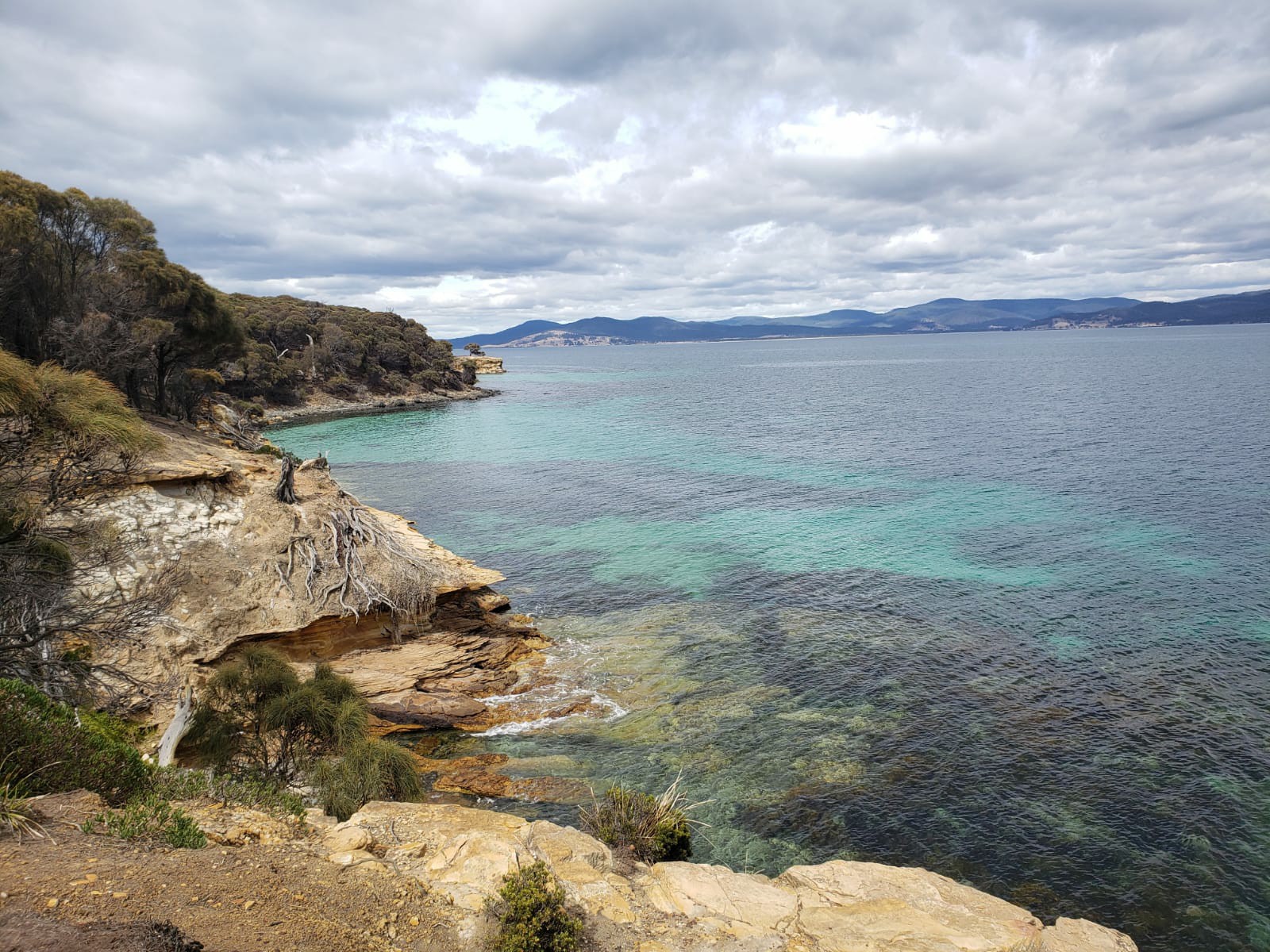
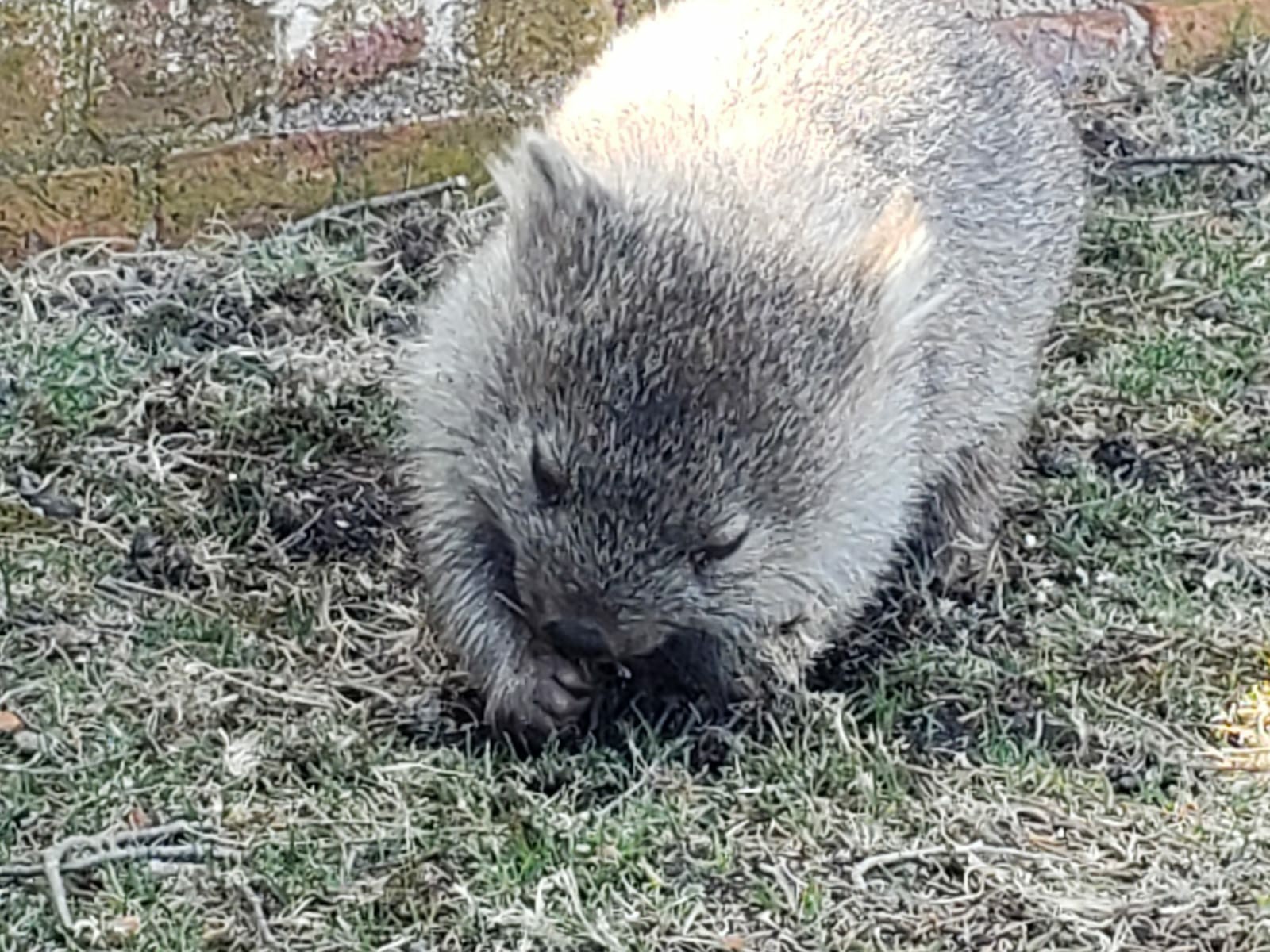
My flight to New Zealand was in four days. I hadn’t yet decided what I would be doing before my departure.
One of Tasmania’s most famous tourist destinations is Port Arthur, another penal colony of particular notoriety. Given its disturbing past, I hesitated to go. However, the restored site with various walking tours and its 1830 restaurant receive rave reviews.
I decided to balance the painful history of Port Arthur with Tasman Peninsula’s natural wonders.
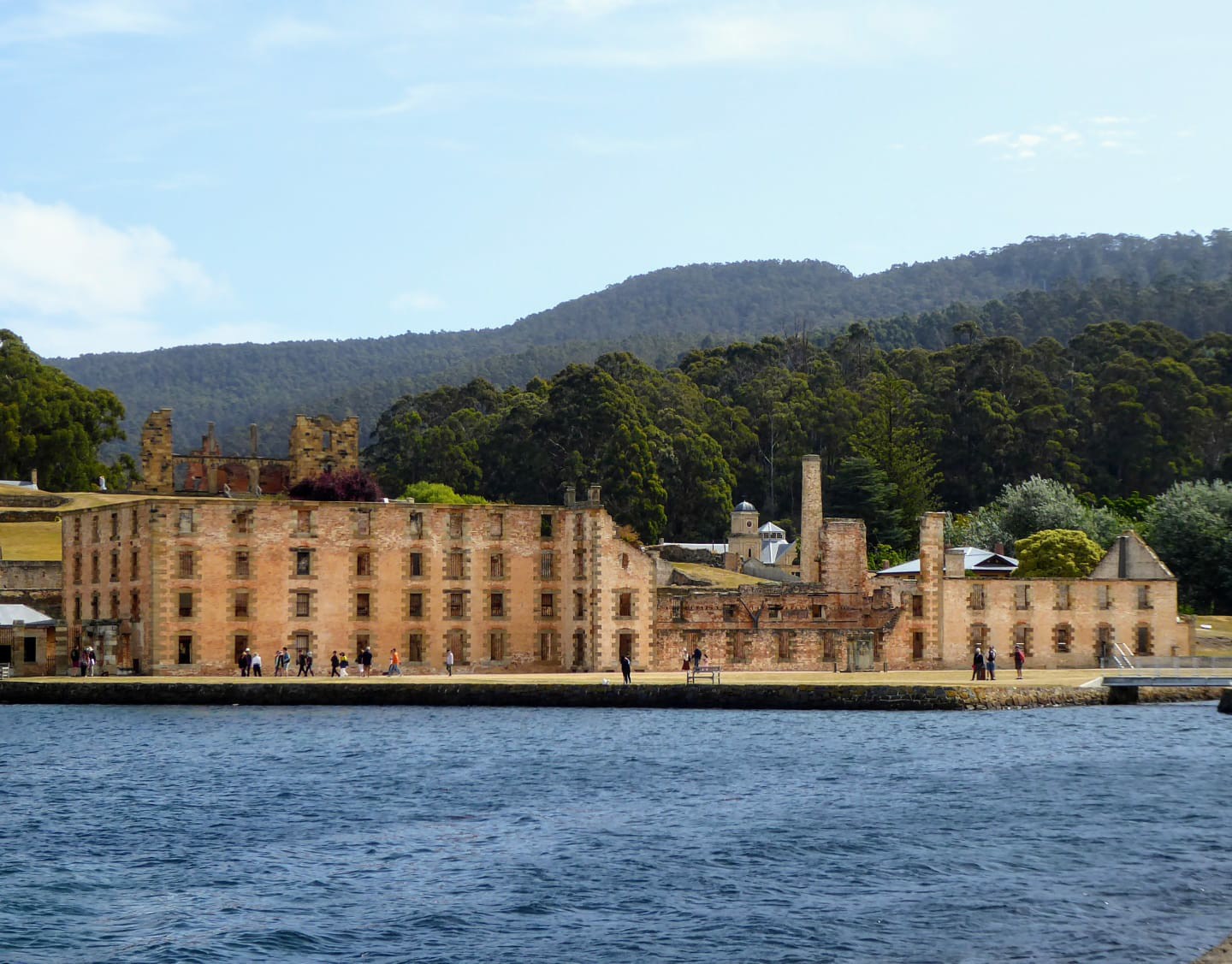
Australia is taking steps to recognize its past injustices, particularly land taken from the people who’d lived on it for thousands of years. The introductory tour I took at Port Arthur began with a familiar, albeit perfunctory, statement to that effect. However, the impression that the Europeans came to Port Arthur long after the original residents had left of their own accord seemed intended. Delving a bit deeper it appeared that this was not so. I asked another guide for clarification and he told me, with some hesitation, that this was a subject he was not at liberty to discuss.
Port Arthur is fascinating and disturbing. The incongruously beautiful grounds contrast sharply with its history of pain, hardship, and suffering.
Despite the many hours I’d spent there, l realised at closing I still hadn’t managed to see everything.
My accommodation, a lovely cottage at the Stewart Bay Lodge with water view, was walking distance away. Staying so close was a good excuse to dine at the sleek 1830 restaurant and stay for a night tour.
The now abundant crayfish was offered as a special that evening–probably for many other evenings too. It was a splurge, but I couldn’t resist. After enjoying some oysters and sipping a glass of wine, an entire two-pound lobster was graciously placed before me with assorted accoutrements. I hadn’t expected the crayfish to be so enormous, nor to be such an extraordinarily succulent treat. It was devoured and I enjoyed every bite.
Afterwards, I went on the supposedly “terrifying” ghost tour which was amusing, but hardly lived up to its hype. However, I did opt to walk home afterwards, in the dark, on the forest path with only my headlamp to guide me. As I ventured off, the guide warned me of the wild animals I´d likely encounter. I think it was more to spook me than anything else, but initially the warning had its desired effect. My senses seemed on high alert.
And then I listened to the wind blowing through the leaves and the gentle sound of my footfall on the path. The warmth of the day was gone, but the night air was comfortably crisp, clean, and fresh. I did hear a few animals scurry as I approached, but none I feared. I embraced the solitude. It was afterall a privilege, if only a short while, to be there.
I returned to Port Arthur the following day to see the places I’d missed. Once again I spent hours walking around. There was so much to take in. The landscaped gardens, antiques, artifacts, and dwellings all told stories of the past.
And then I wandered into a small area I hadn’t noticed before, the Port Arthur Memorial Garden. It was built to commemorate the victims of the tragic 1996 massacre.
My heart ached for the loss of all those innocent lives. I took a seat in silence and cried. The tears released the emotions I’d managed to keep at bay the last few days.
Emerging from the garden and thoughts of its past I focused on the promise of the present instead.
The next morning was nearly my last. After speaking to Cass, the lovely and knowledgeable receptionist, I followed her advice and went to Cape Huay for a hike. However, after walking an hour, I almost turned back. The skies suddenly turned menacing and I wasn’t equipped. Fortunately just then I met a couple from Toronto, who confidently said the forecast predicted sunshine. I decided to continue. They were right.
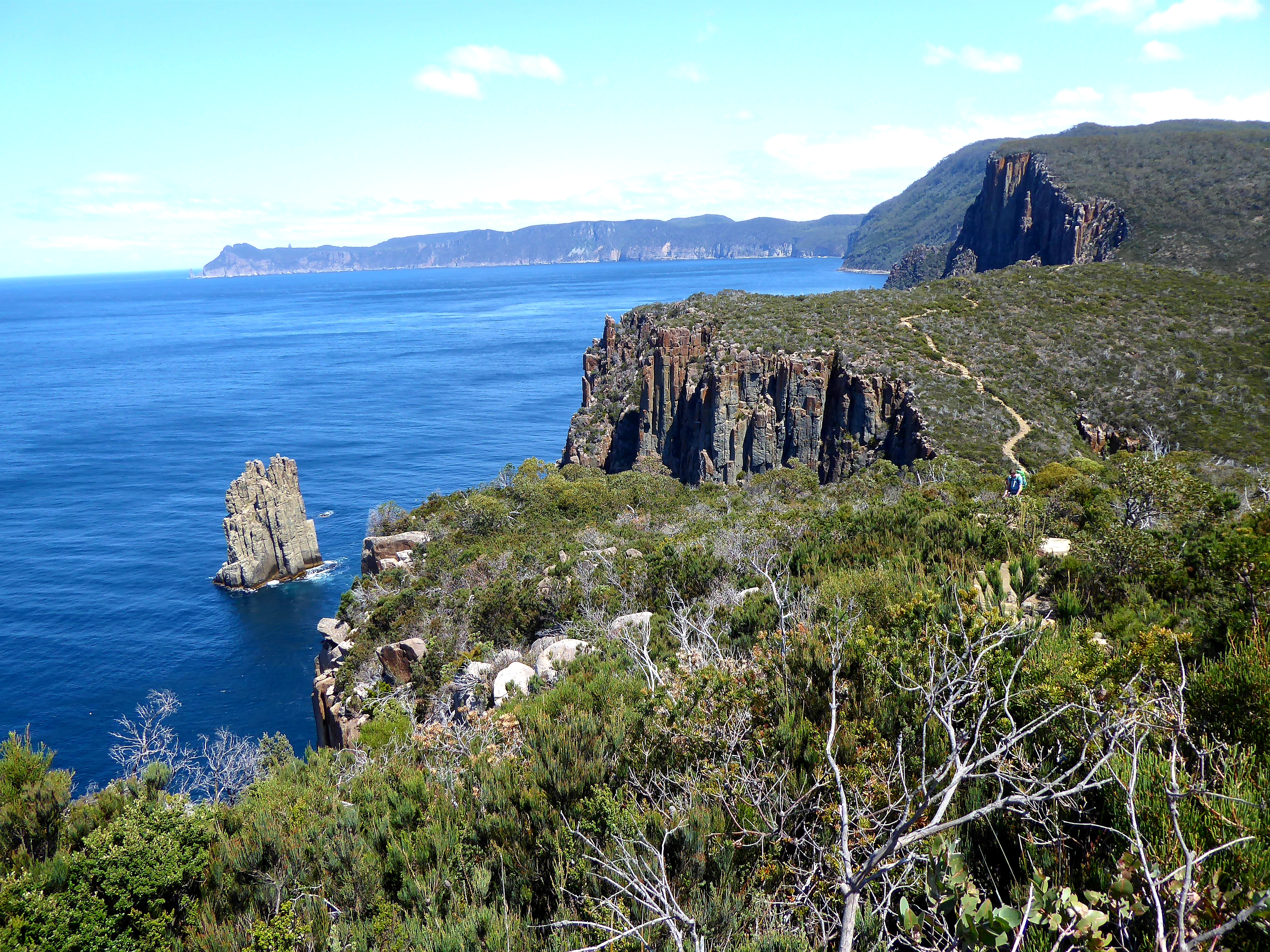
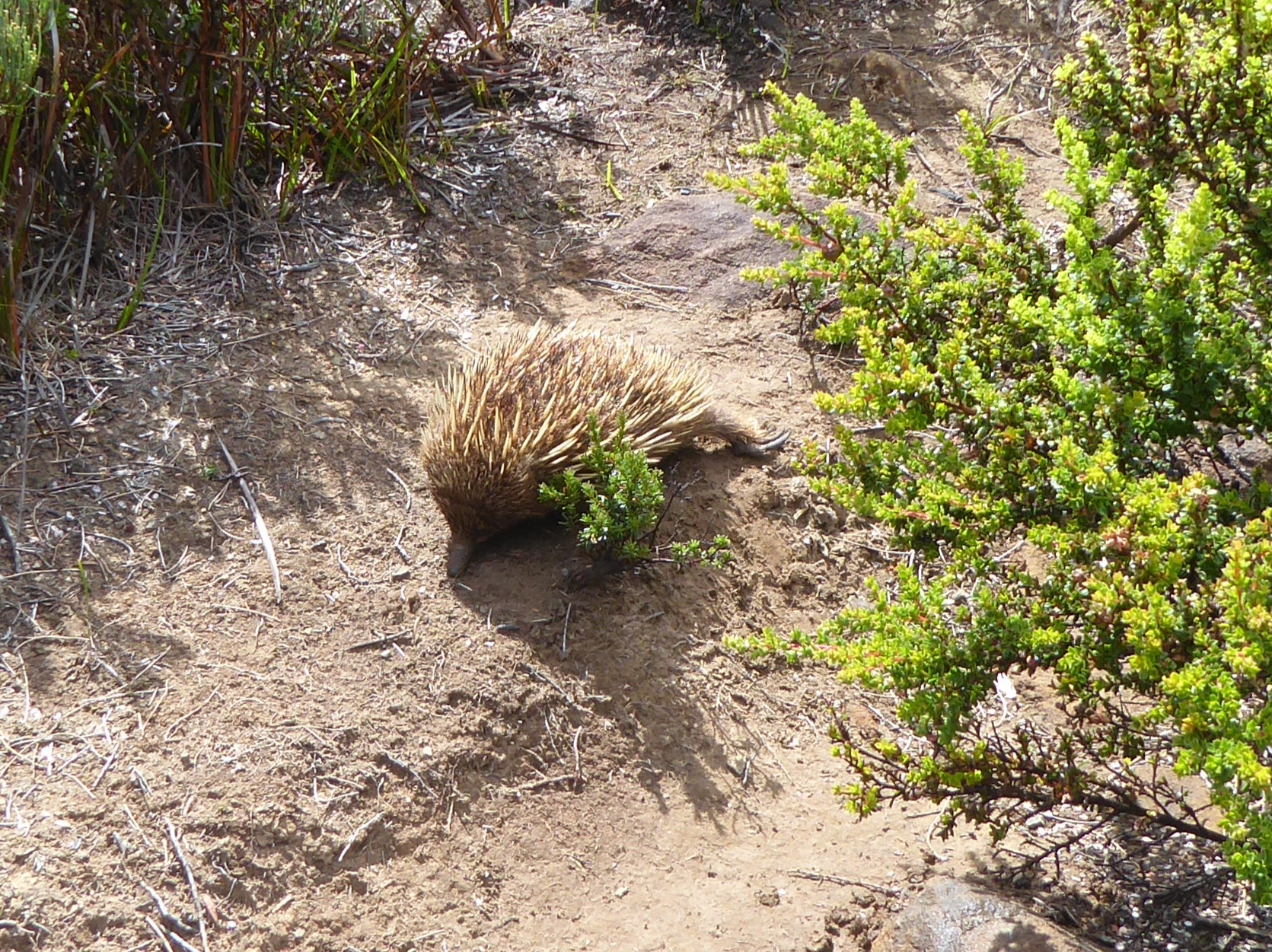
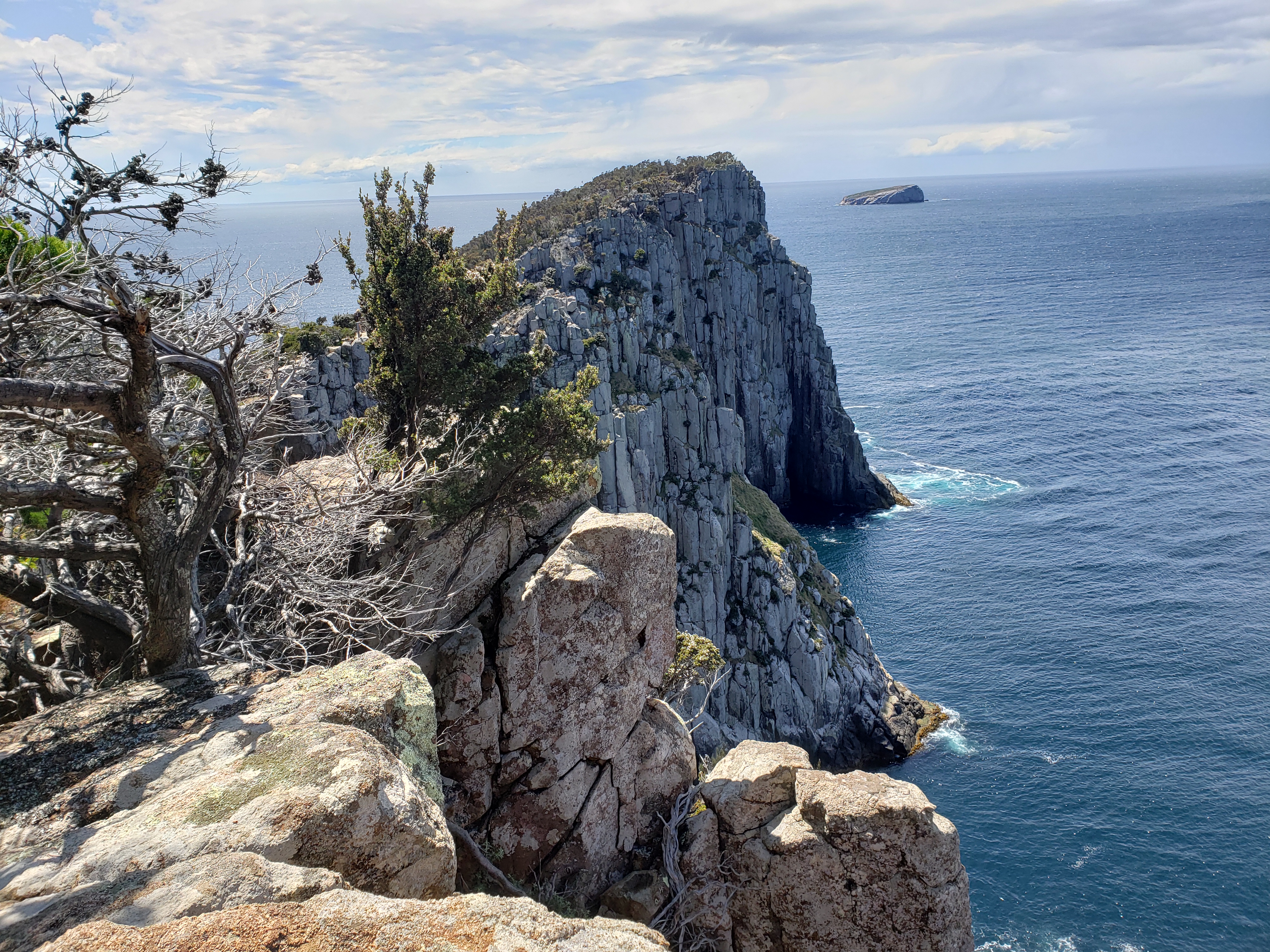
Cass also suggested the Pennicott boat tour. It not only provided a different perspective of Bruny Island,
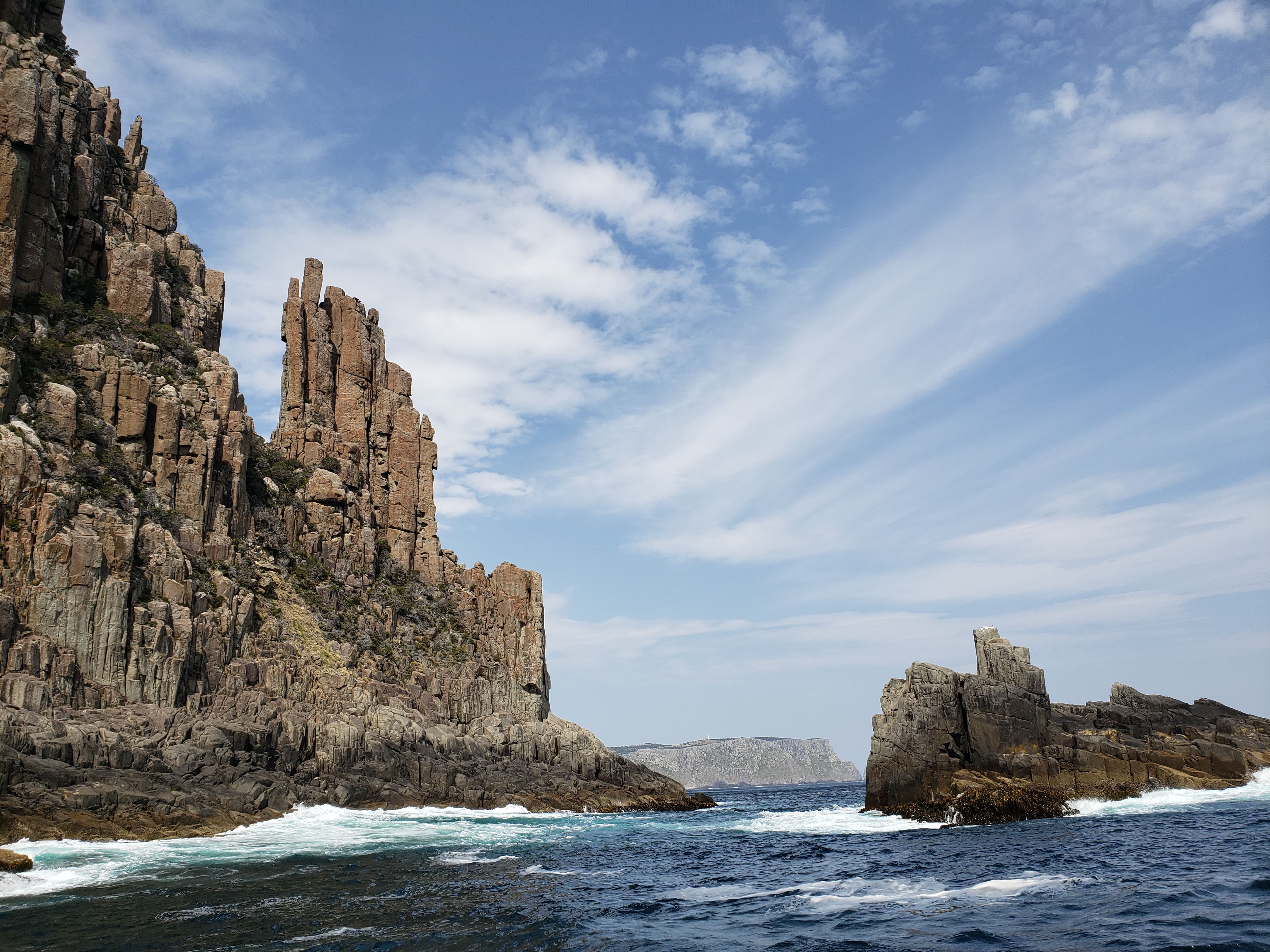
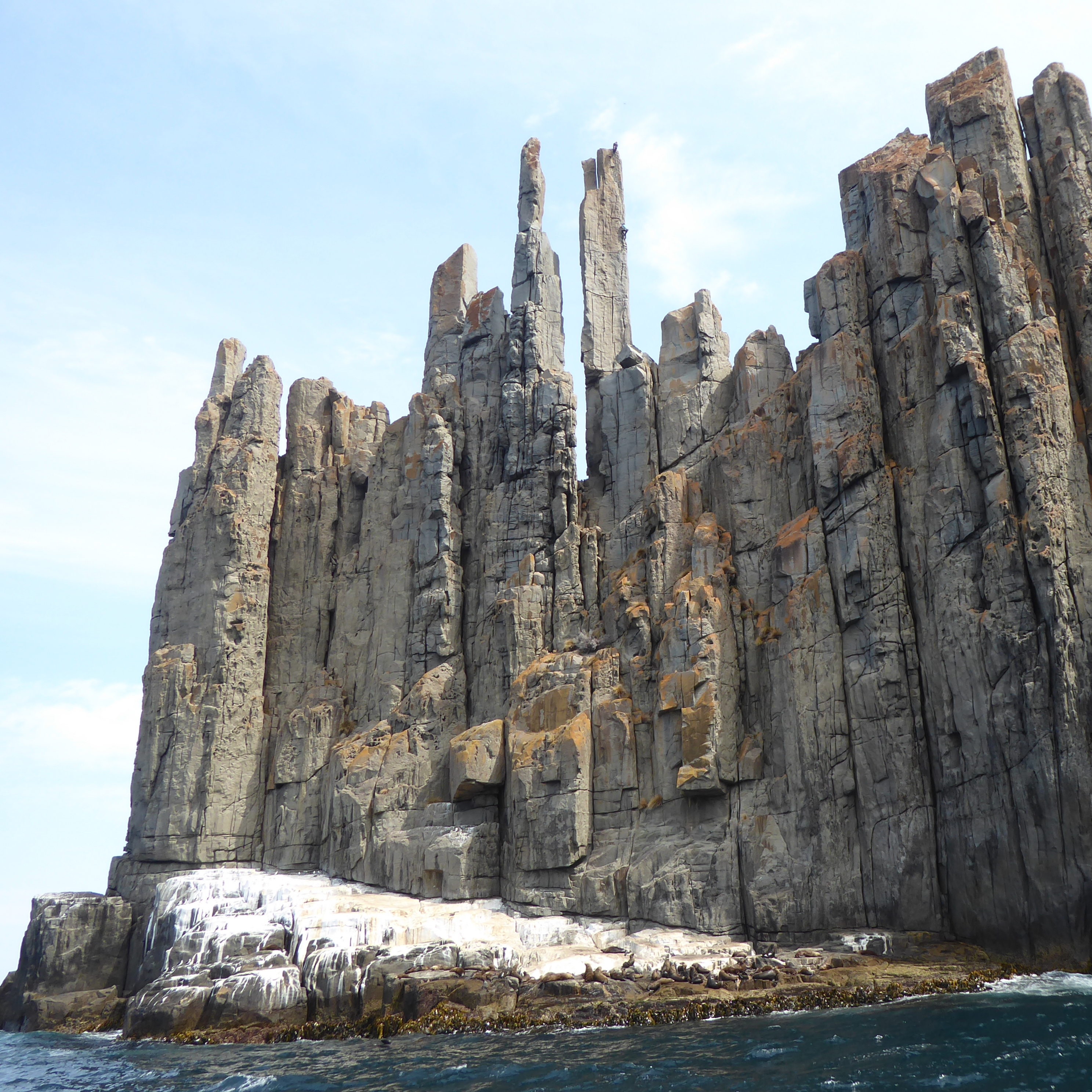
but fabulous encounters with seals, albatross, and dolphins.
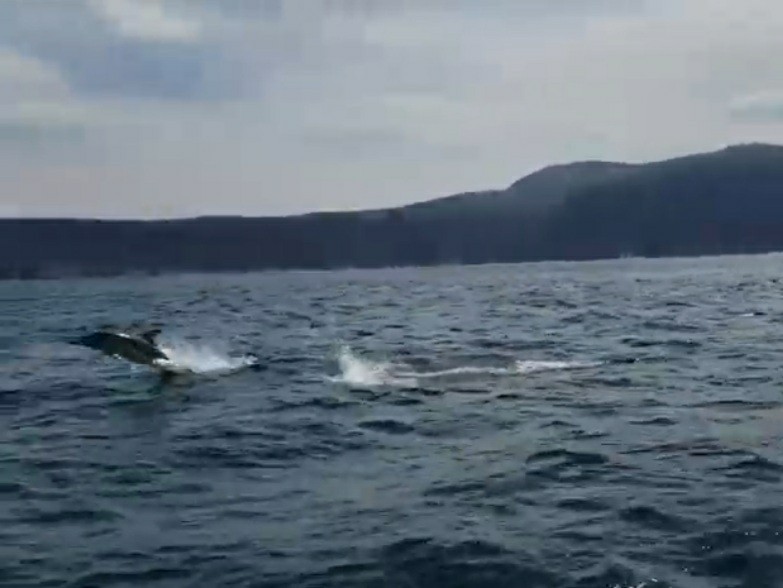
The Tessellated Pavement, is an unusual geological formation, but notably less exciting than the boat ride and dolphins. However, the drive and walk getting there was lovely.
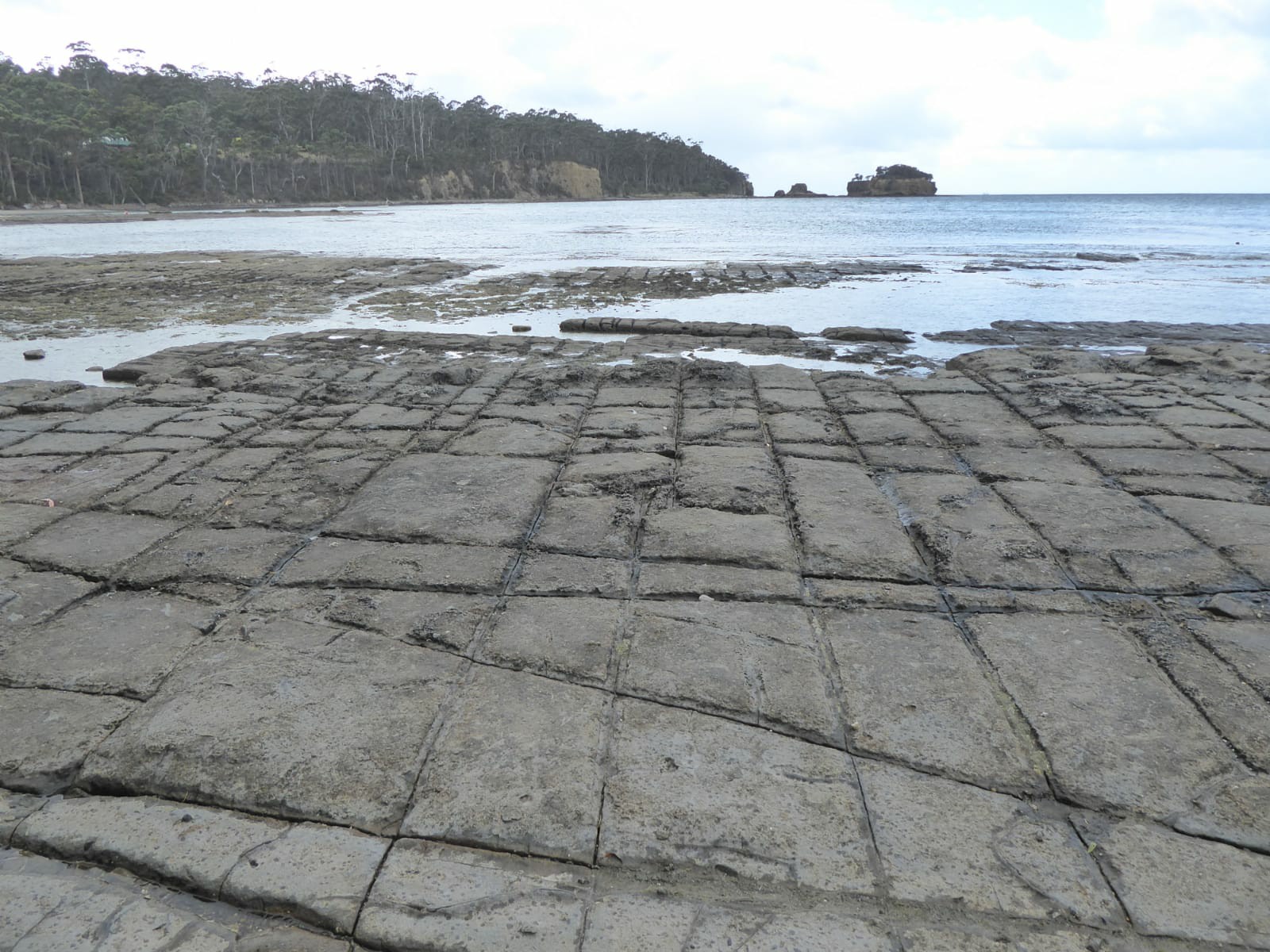
Before I knew it, I was saying goodbye to Tasmania. But not before stopping at a lavander farm and indulging on lavender ice cream.
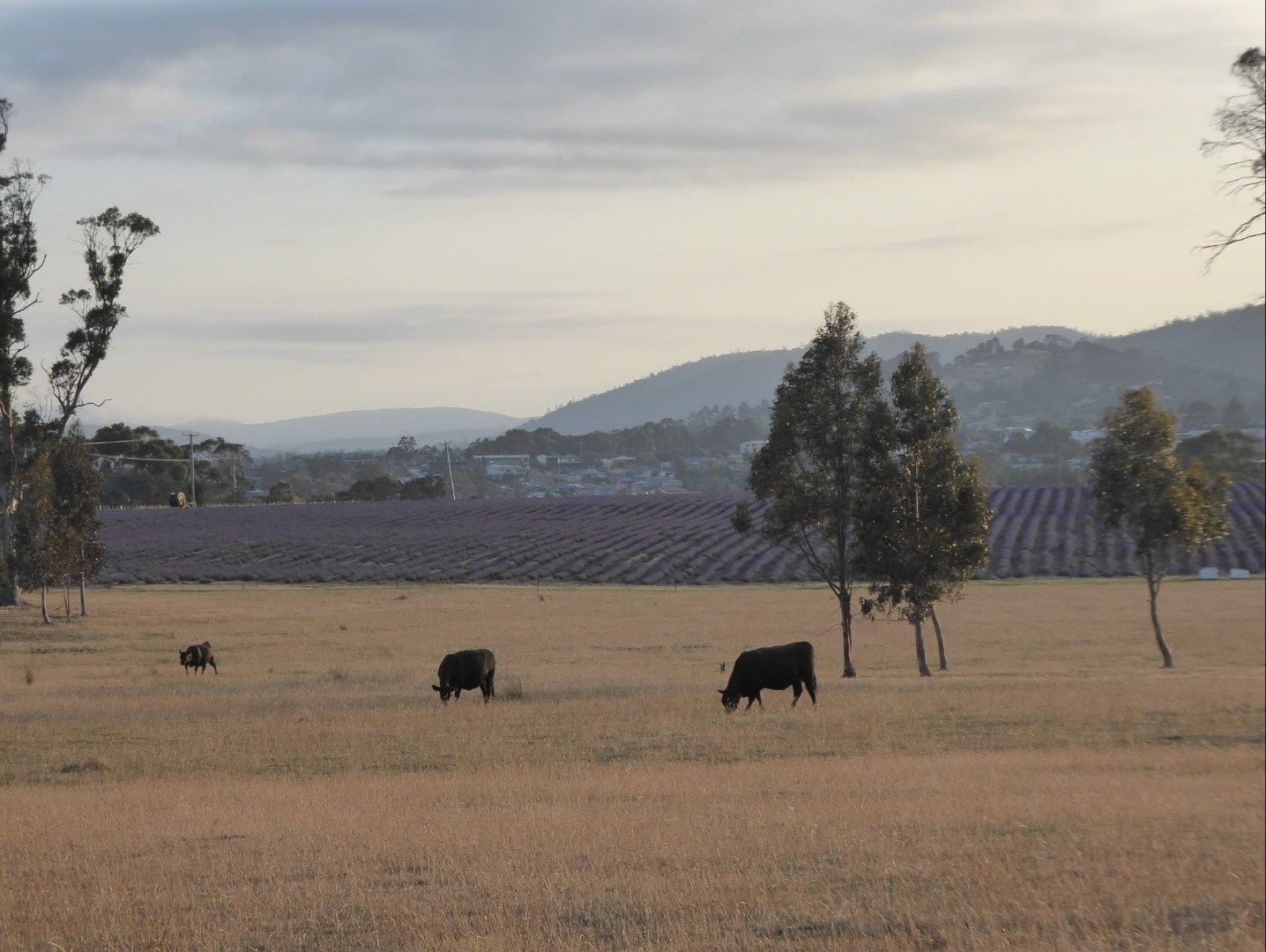
to be continued…